7 Jaw-Dropping Days along the Wild Atlantic Way, Ireland
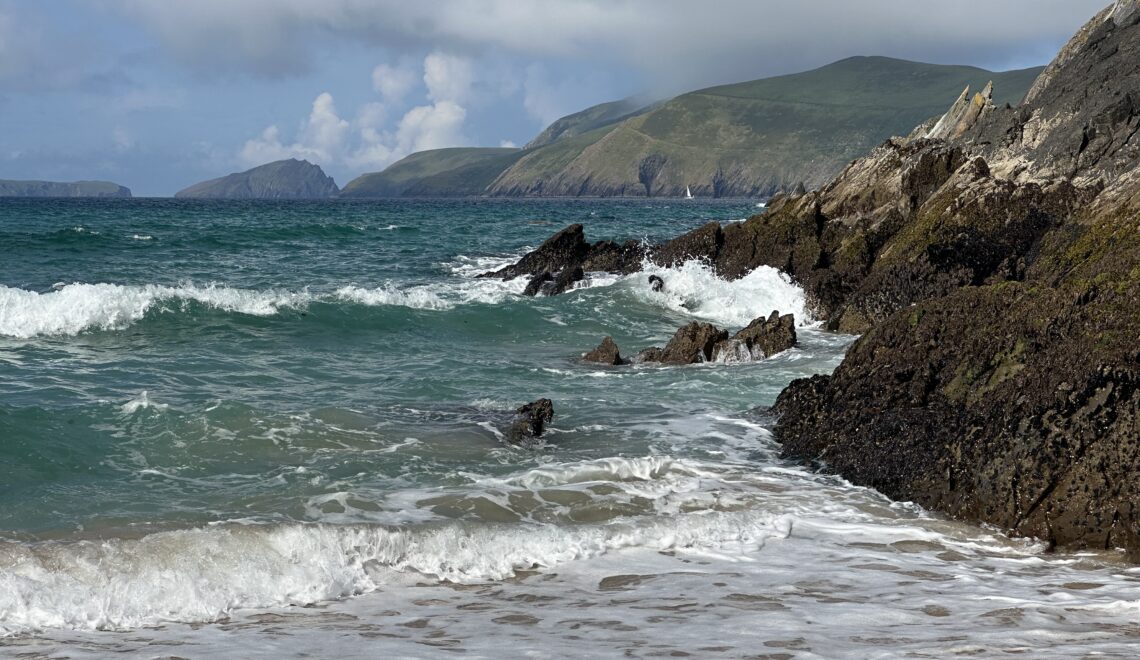
There are surely thousands of amazing things to do in Ireland. But if a road trip along the Wild Atlantic Way isn’t the top thing, we just don’t know what could be.
The entire Wild Atlantic Way is 1600 miles long, spanning from the northern tip of Northern Ireland to the southern tip of Ireland – so driving it is daunting! But it is broken down into 14 digestible segments, each with many spectacular sites, meaning even if you only have a few days, you can cover just a few segments and have a wonderful trip.
When our extended family of 10 people (ranging from 4 years old to 50-ish) decided to take a trip to Ireland, we toyed with renting a van and driving. But after reading about the steep and narrow roads, not to mention driving on the left-hand side of the road, we decided upon a small group tour instead. The whole trip could most certainly be done on your own, but for our group, a tour was a smart decision.
After lots of research, we decided on Vagabond Tours. Vagabond was a great choice for two reasons. First, their knowledgeable, experienced, and entertaining guides elevate the already incredible trip. Second, as a group of 10 people, we got a private tour for no extra cost. So our family was able to personalize the trip even further. (The maximum number of people they have on a tour is 13, so it is never a very big group.) Our tour was 6 nights and 7 VERY full days beginning and ending in Dublin.
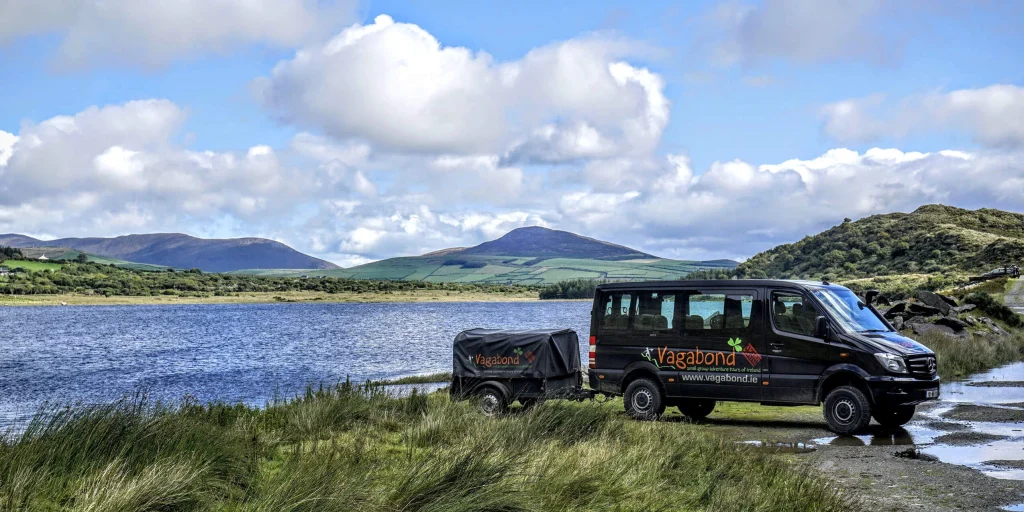
** Please note that this page contains affiliate links, meaning we may earn a very small commission if you book through them (at no extra cost to you).
Table of Contents
Day 1 – Galway, The Burren, and The Cliffs of Moher
About a two-hour drive (or train ride) from Dublin is the enchanting medieval seaside town of Galway, at just about the halfway mark of the Wild Atlantic Way. On our next trip to Ireland, we will definitely spend more time there. Its walkable pedestrian-only city center is filled with unique shops, pubs, restaurants, street performers, art, and music.
Galway also offers excellent architecture, historic churches, gardens, museums, a picturesque harbor, and a fascinating cemetery, to name a few things. It is a short drive or bus ride from Connemara National Park.
45 minutes or so south of Galway is one of the lesser-visited but equally amazing places our guides took us – The Burren. It is like stepping into another world. Surrounded by the Atlantic on two sides, the Burren is a huge, rocky, treeless, eroded limestone landscape completely unlike other areas of Ireland. It is a paradise for rock-hopping enthusiasts like our children and grandson! Surprisingly, for such a rocky area, fauna abound. The unique microclimate creates the only place in the world where Arctic and alpine plants grow beside Mediterranean ones.
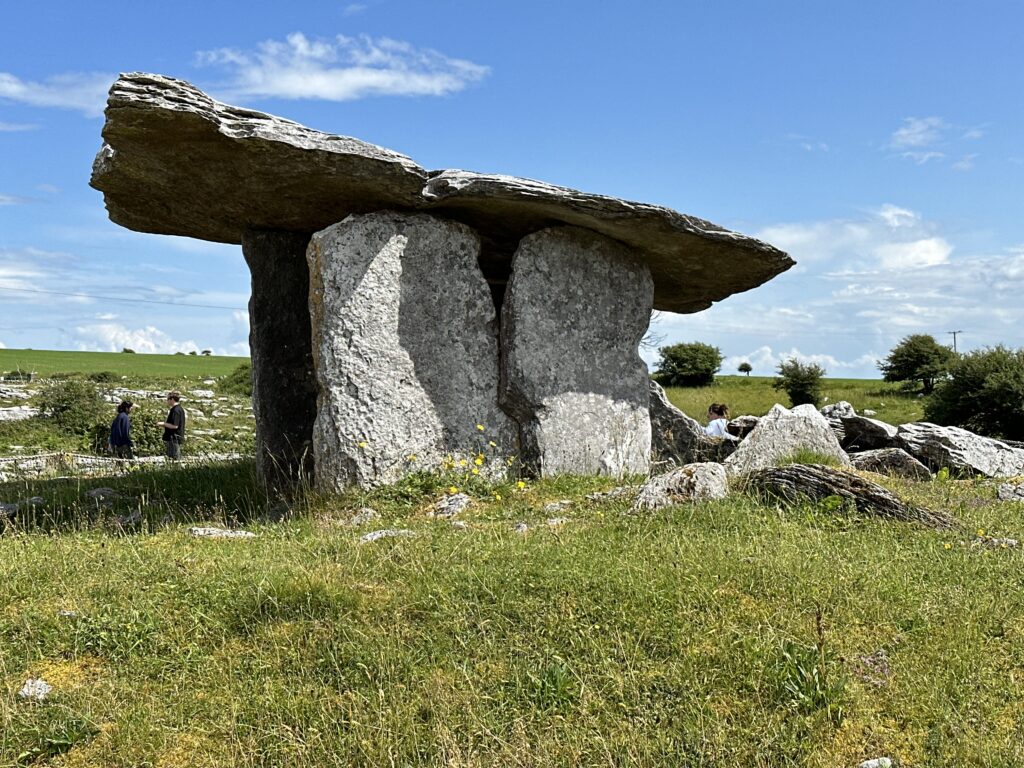
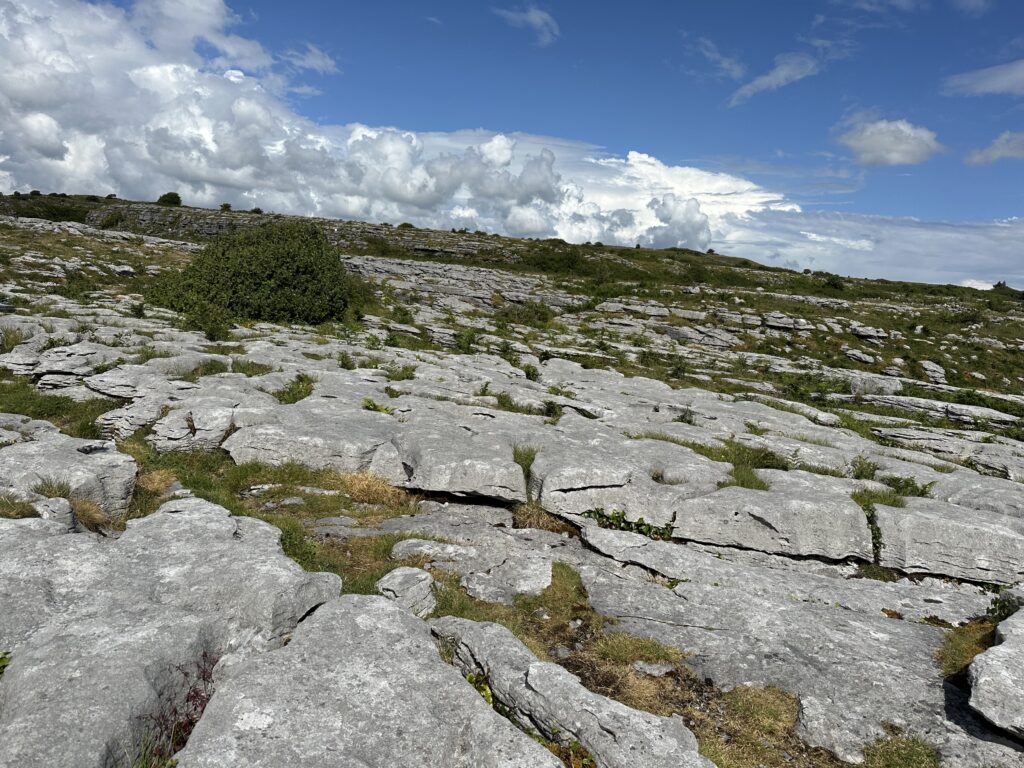
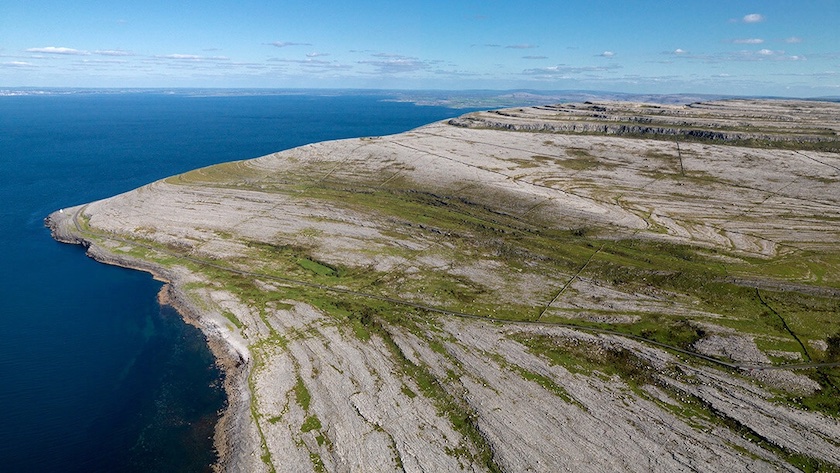
Another 45-minute drive southwest brings the famed and majestic Cliffs of Moher. Soaring 700 feet over the Atlantic and spanning 8 miles, they are a sight to behold. The high cliffs, the dramatic crashing waves, the steep trails, and the views forever might explain why it is the second most visited attraction in all of Ireland. (#1? The Guinness Storehouse in Dublin. Beer always wins!)
We were disappointed but not surprised that it was pouring down rain while we were at the Cliffs. (“No, not raining.”, said our guides, “It’s lashin.”) In the end, it didn’t matter because the Cliffs are a whole different kind of beautiful when it’s lashin’.
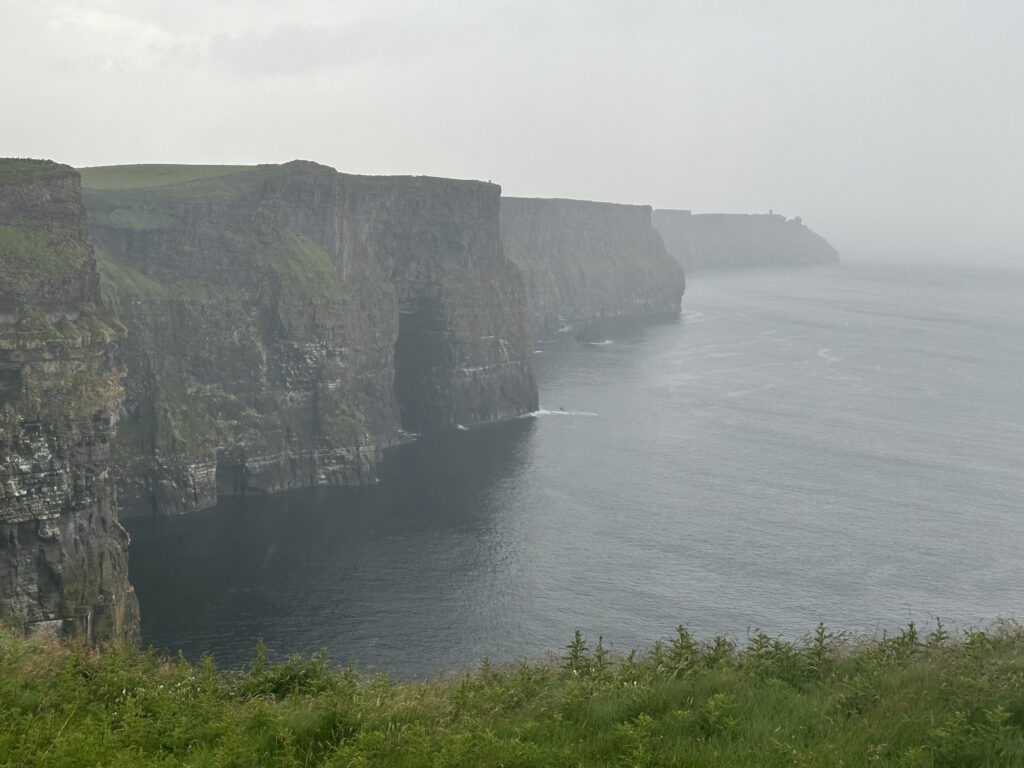
We ended Day 1 at the stunning Armada Hotel located on Spanish Point overlooking the Atlantic. We enjoyed a delicious dinner in the hotel restaurant and a long walk along the rocky beach just outside our door. Heaven!
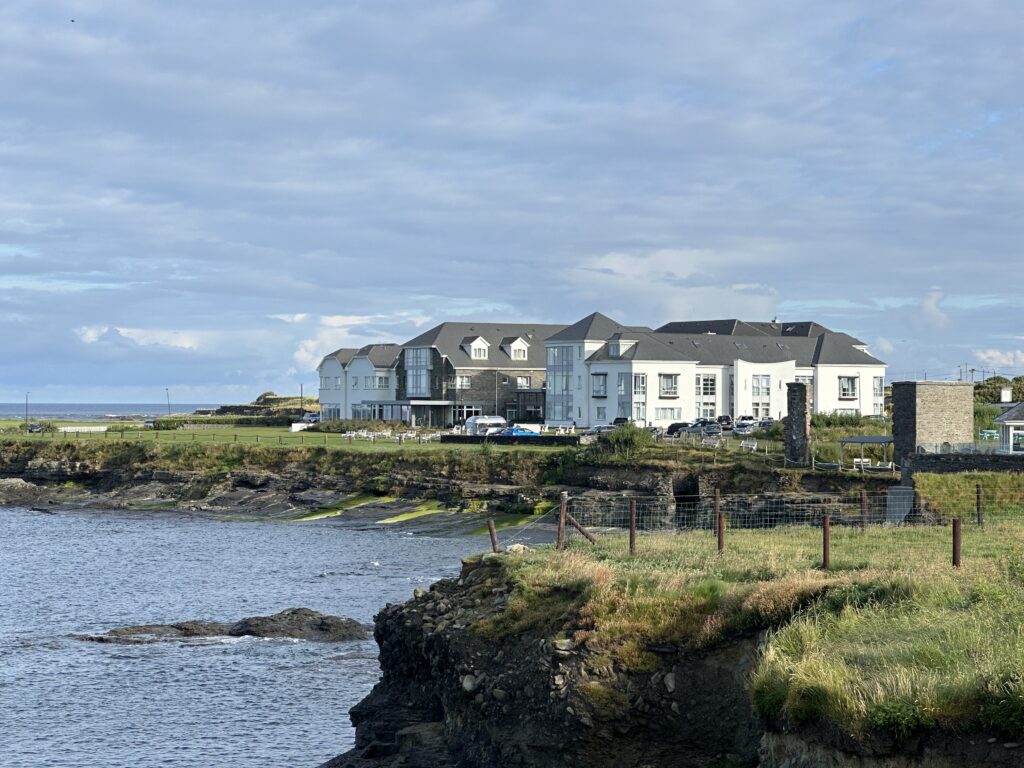
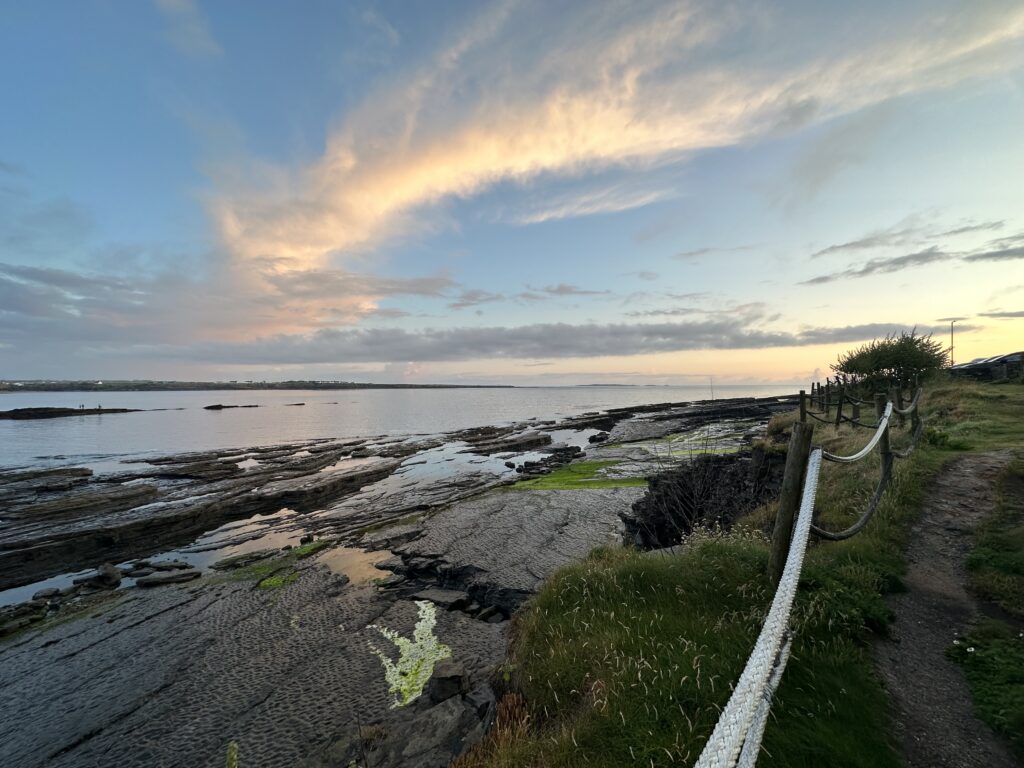
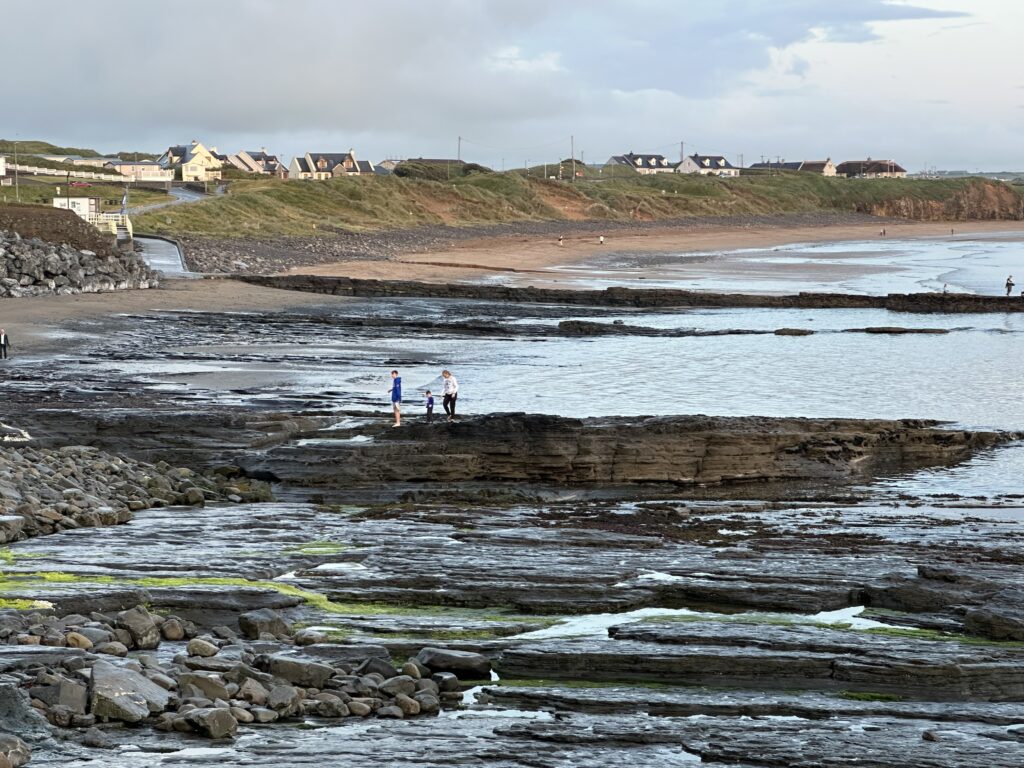
Day 2 – Kilkee Cliffs & Sheepdogs
Today was full of wonderful surprises! We awakened to the surprise of what was surely one of the best hotel breakfasts anywhere. We feasted on free-range eggs, locally smoked fresh salmon, various Benedicts, freshly baked pastries, farm-fresh tomatoes, and freshly squeezed juices, all in a dining area overlooking the sea.
Next, our sneaky guides made a surprise stop not listed on the itinerary, but one of the best stops of the whole trip: Kilkee Cliffs. Yesterday we’d seen the Cliffs of Moher but didn’t get any clear views due to the weather. Today, the sky was clear and the sun was shining and these cliffs were just as beautiful as the Cliffs of Moher, but there were no crowds. We only saw a few other people while we were there. Our guides dropped us off near the top, and we hiked down, taking about 90 minutes including nearly constant stops for photos. (Bonus! There is a little cafe/ice cream shop at the bottom.)
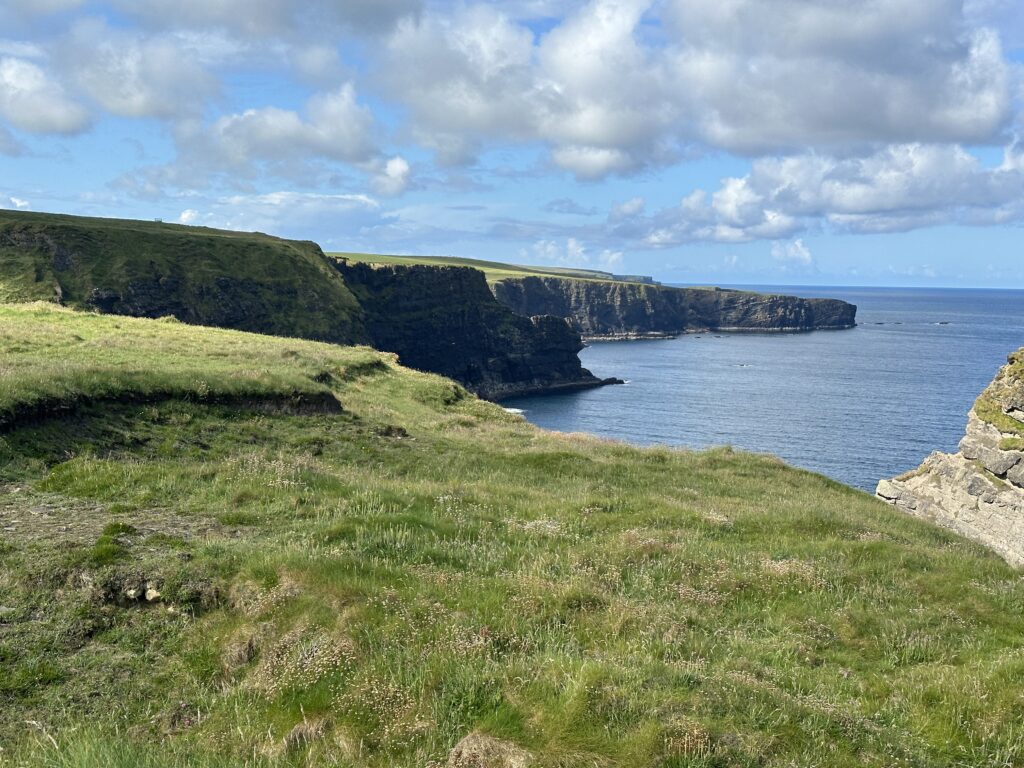
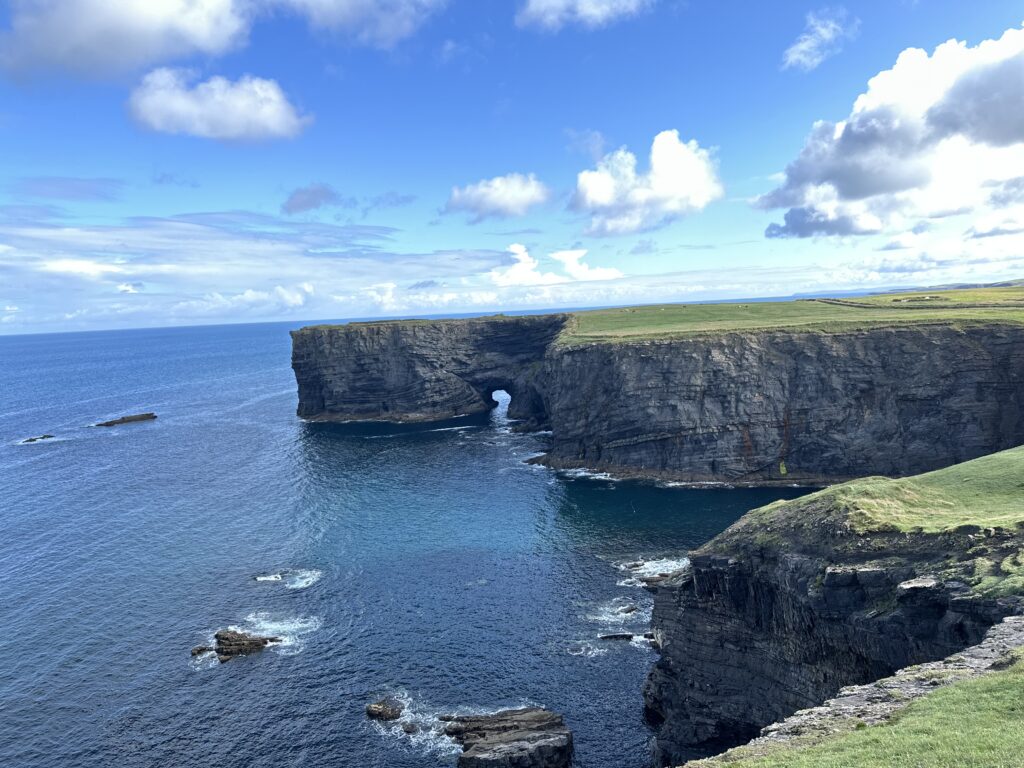
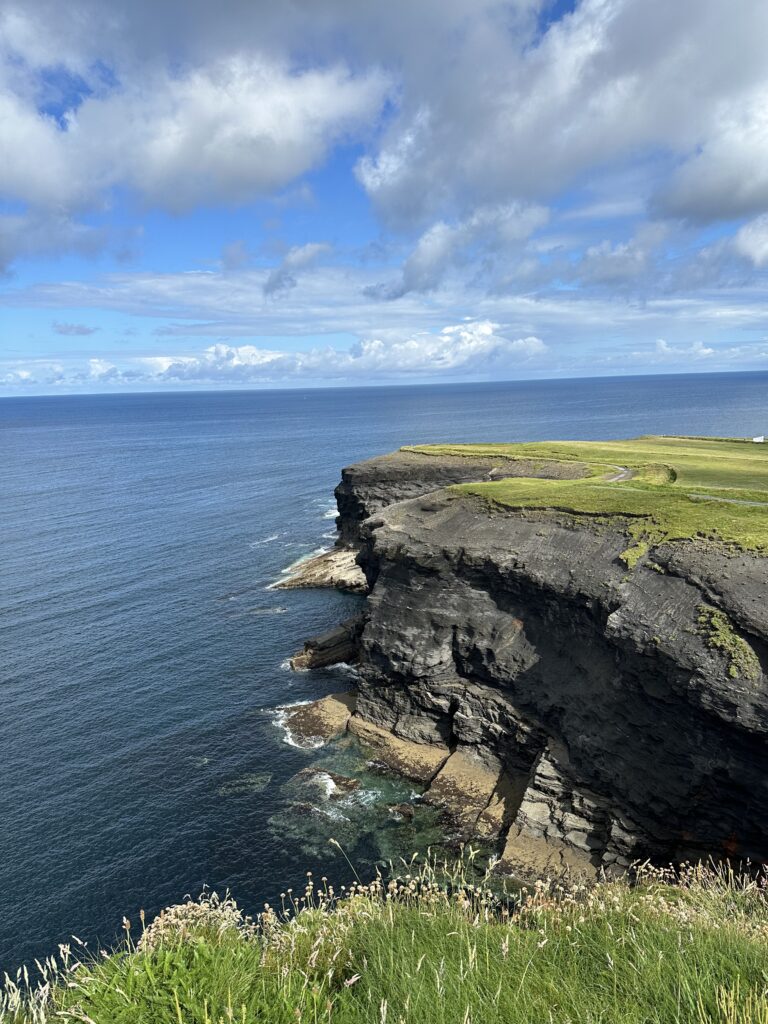
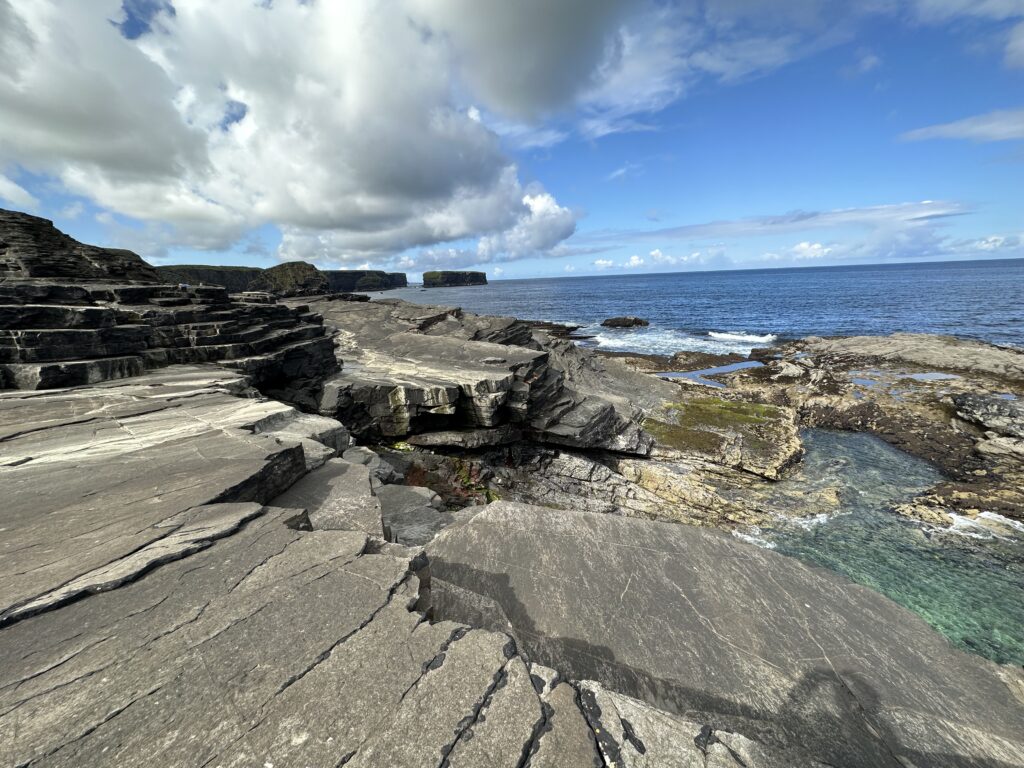

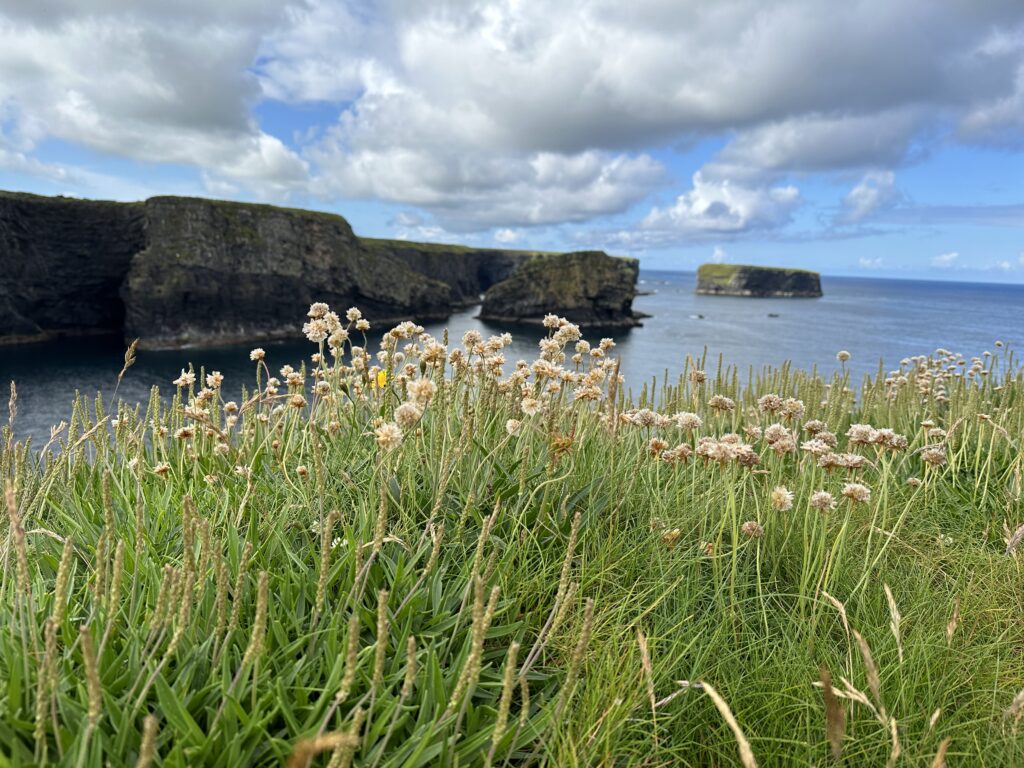
Our next mode of transportation was a ferry, on which we crossed the Shannon River to arrive in the “Kingdom of Kerry”, also known as County Kerry, where would spend the next several days.
We were heading to a sheep farm. This, too, turned out to be a surprise. Our group is from the Midwest in the US, and we’ve all seen lots of sheep. Cute as they are, we wanted to spend time doing things we can’t do at home. When I asked (well before the trip) if we could skip it and spend more time somewhere else, they were more than willing to do so. But they warned that for many of their guests, this was their favorite activity. So we took their advice and went.
They were right! All of us very much enjoyed the impressive demonstration of sheep herding by the star pup, Max. Their sheepdogs are so obviously enthusiastic about their work; it is a joy to watch them. (We’re not sure, though, if the sheep are so thrilled with being bossed around!) We also got to feed and hold the lambs. It was an enjoyable afternoon for all of us, and for some, a highlight of the trip – just like the guides said!
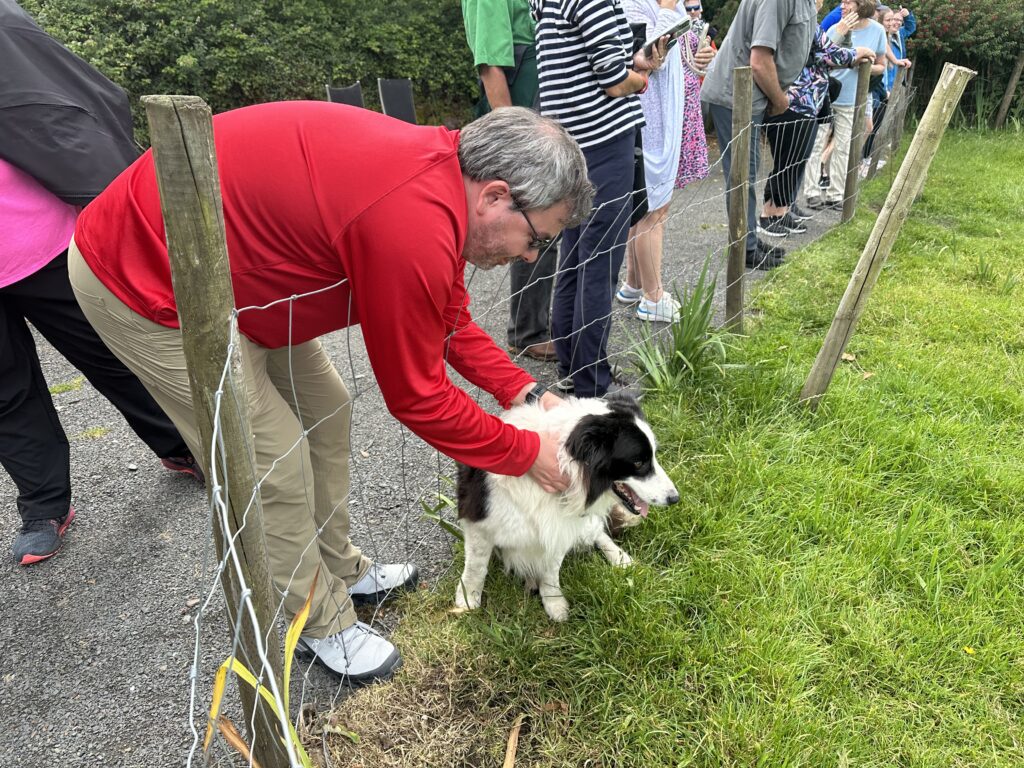
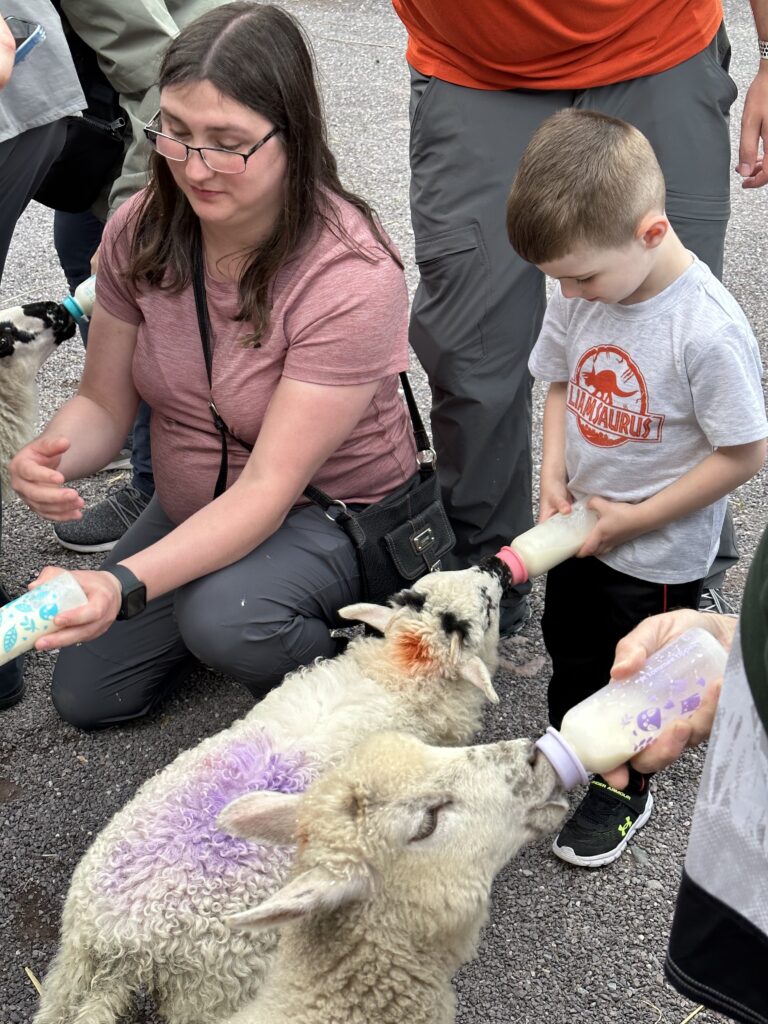
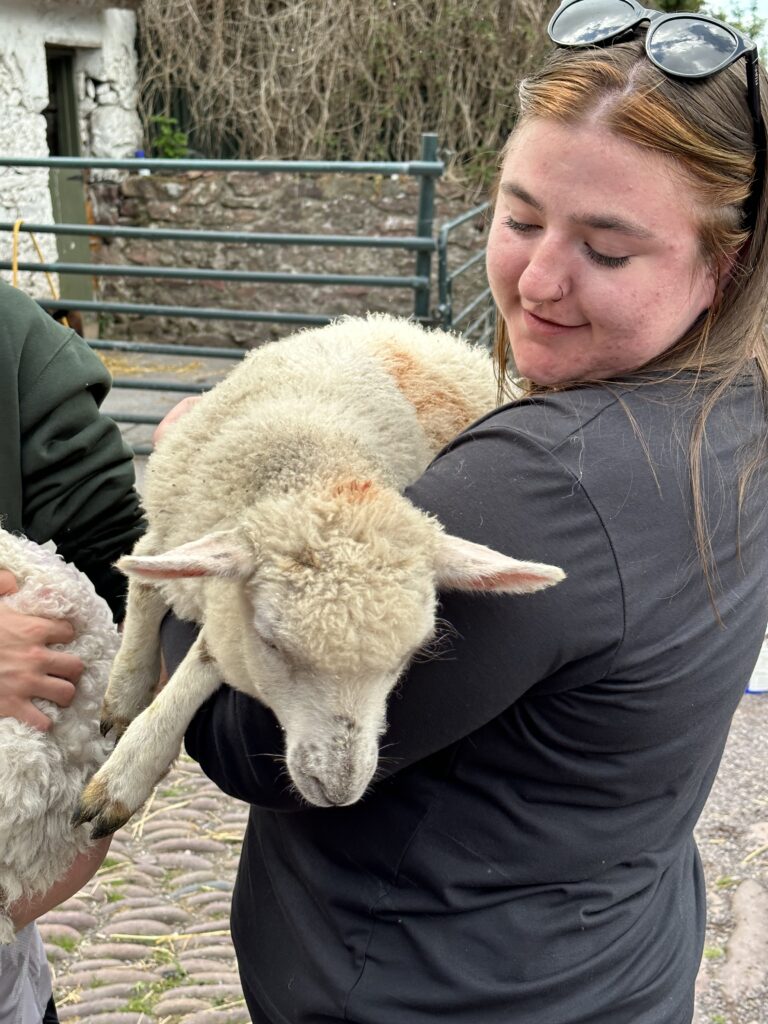
Toward the end of the day, we headed to the town we were most looking forward to: Dingle, located on the Dingle Peninsula. This is the only place we spent two nights during our short trip. Our hotel was the lovely Dingle Skellig Hotel & Spa. It was a little outside the main area of town, but very much worth it to be right on the sea.
Day 3 – Dingle, Slea Head Drive, & Golf by the Sea
We’d built Dingle up a lot in our minds over the year of planning this trip. It lived up to the hype, and then some. The adorable town of 1500 residents is friendly, colorful, scenic, and full of art, traditional music, and unique shops. It’s even becoming a bit of a foodie destination, though it has plenty of fish & chips too.
It would be easy to spend a couple of days just meandering through the streets of Dingle, watching the ships in the harbor, lazing on the beach, nursing a pint while listening to live music, and of course, having a scoop or two of legendary handmade Murphy’s Ice Cream. But the rest of the Dingle Peninsula is a short drive away, and can’t be missed when you’re in the area.
Continuing on the Wild Atlantic Way, Slea Head Drive features some of the most spectacular scenery we encountered — on a trip full of spectacular scenery. The cover photo for this article is from this drive. It starts and ends in Dingle and is only 24 miles long, but it takes an absolute minimum of a half day to do it justice.
A good portion of the drive is a sheer cliff wall on the left side of the road and a drop-off into the Atlantic on the other side. This was a day we were especially glad we weren’t driving! There are dozens of gorgeous overlooks and beaches at which to stop, as well as historic sites, including the Lios Stone Circle & Animal Feeding. There, you can explore fascinating ancient stone structures, also known as “fairy forts”. In addition, you can interact with and feed groups of happy and friendly farm animals such as goats, llamas, horses, donkeys, and sheep.
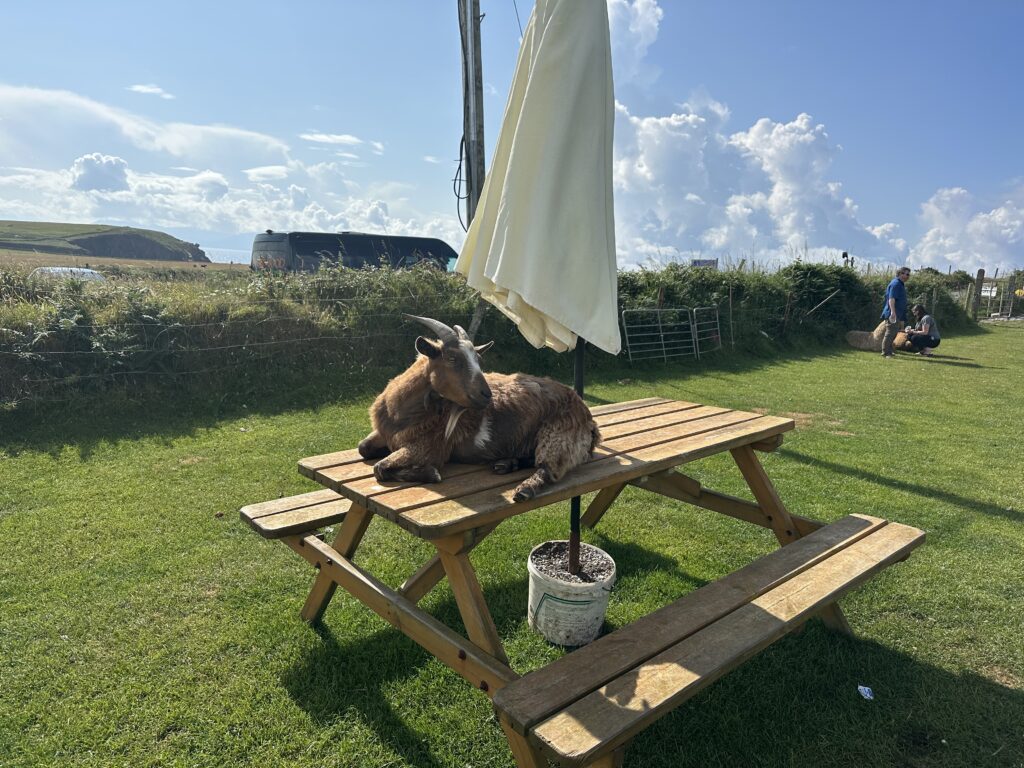
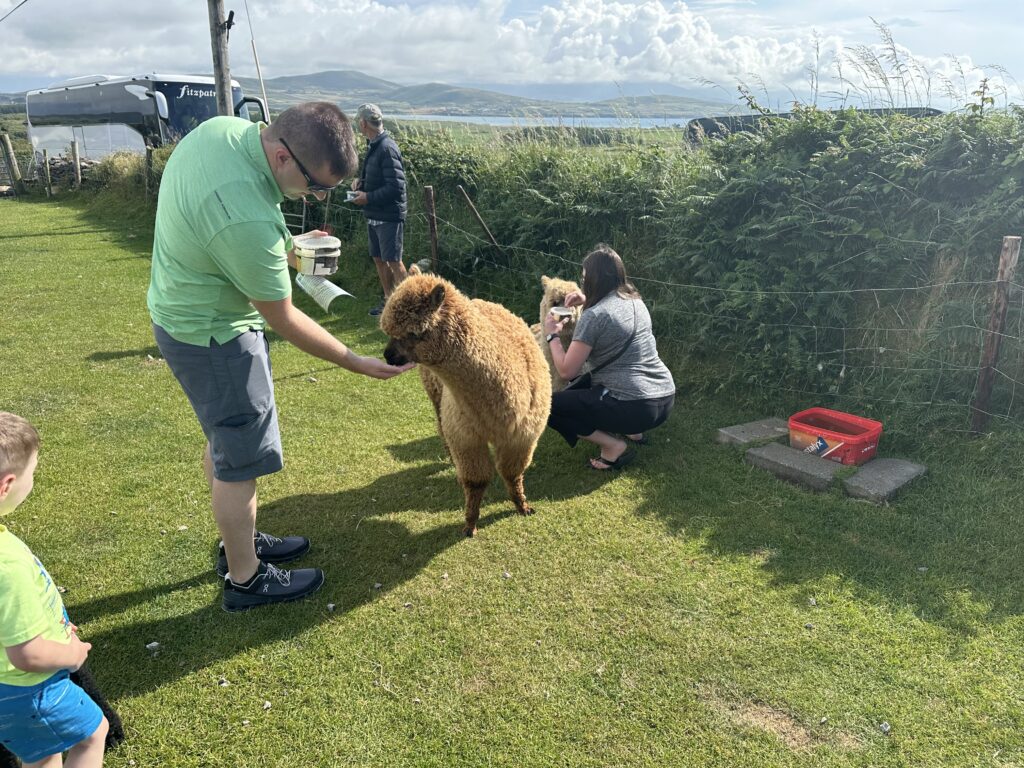

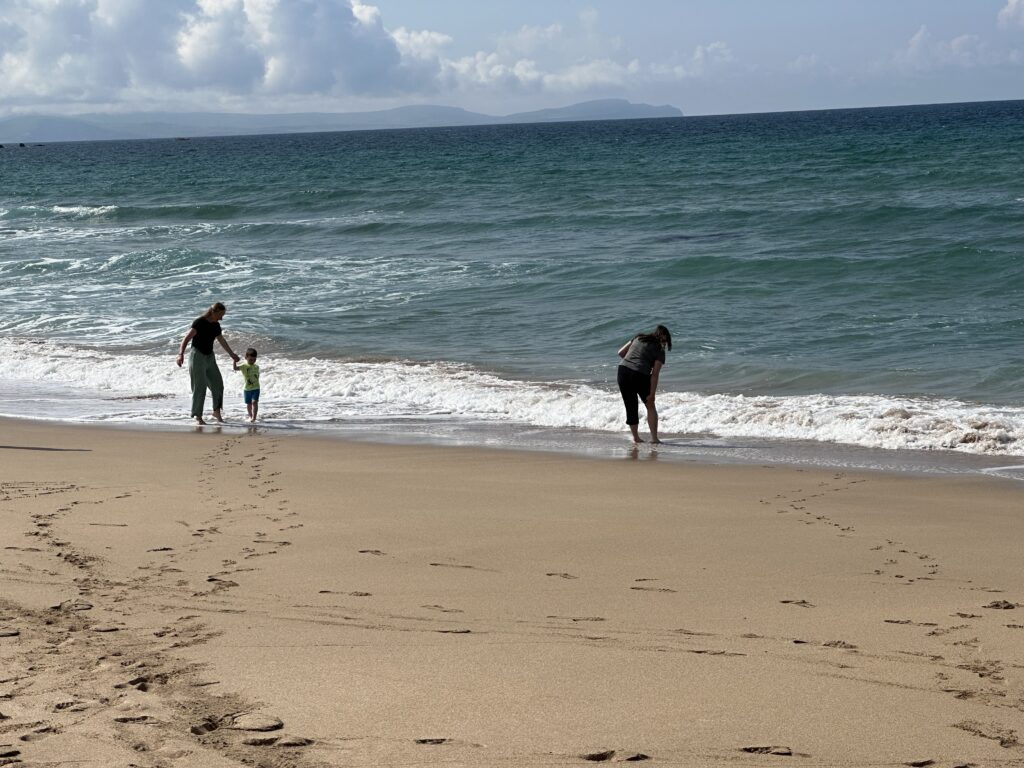
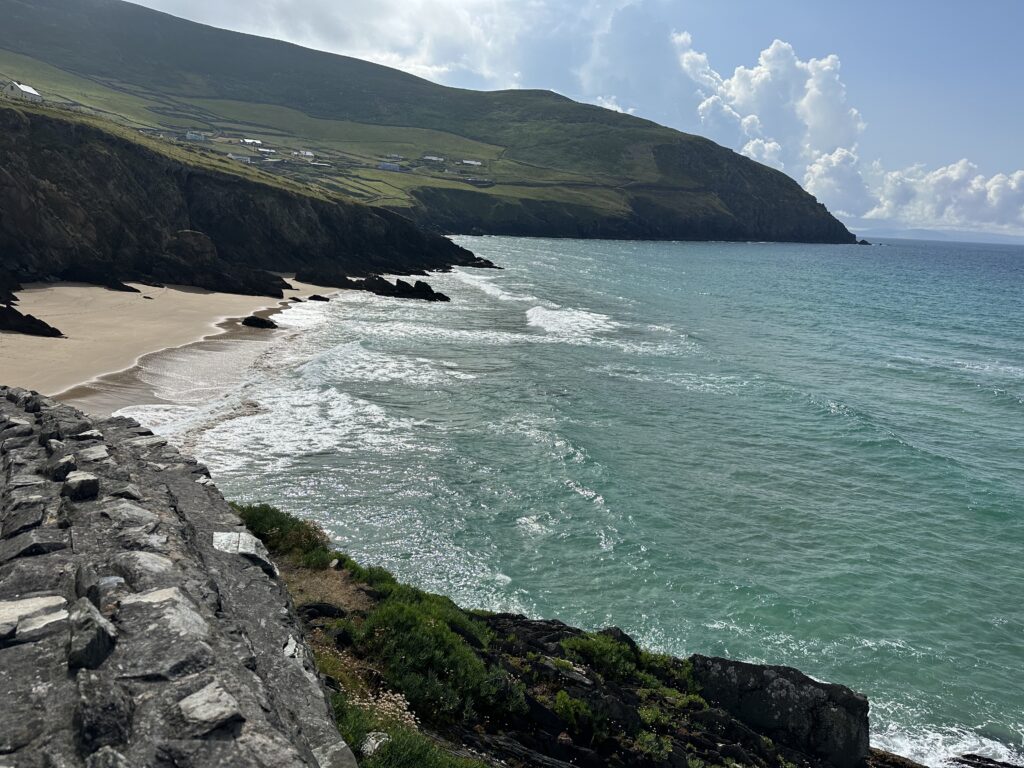
In the afternoon, our group split, with half going on a bucket list golf outing to Dingle Golf Links. They all came back glowing with excitement at the experience.
The other half of us spent an enjoyable and relaxing afternoon shopping, sipping tea, and later sipping something a bit stronger.
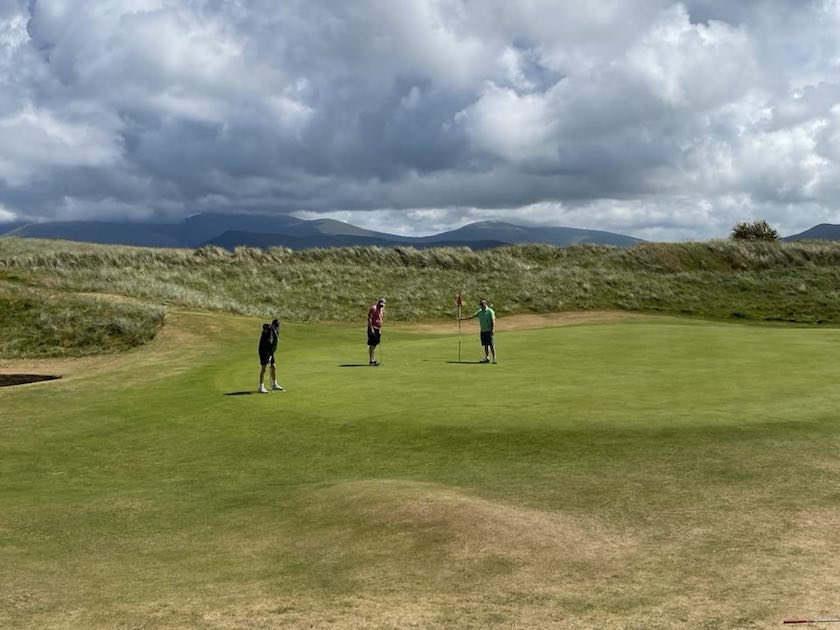
That evening, wanting to make the most of our time in the wonderful Dingle, many in our group walked back downtown and enjoyed some traditional music and a pint at The Dingle Pub.
Day 4 – Killarney National Park, Cahergal Stone Fort & Portmagee
Killarney National Park became Ireland’s first national park in 1932. This park has it all! The highest mountain range in the country, McGillycuddy’s Reeks, as well as lakes, lush woodlands, caves, heritage sites, and the gorgeous 360′ Torc Waterfall. There are dozens of hiking and biking trails, with breathtaking scenery at every turn. Our group opted to rent bikes to tour the park, so we could see as much as possible during our half-day there. Other transportation choices include a horse-drawn wagon, boating, and walking.
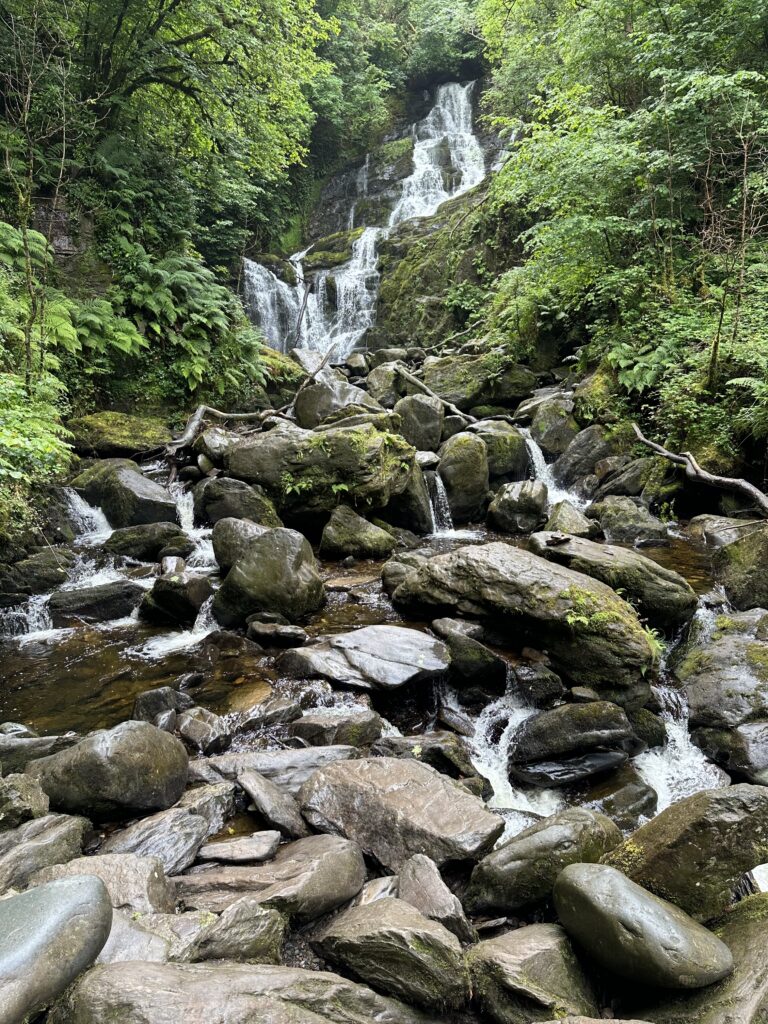
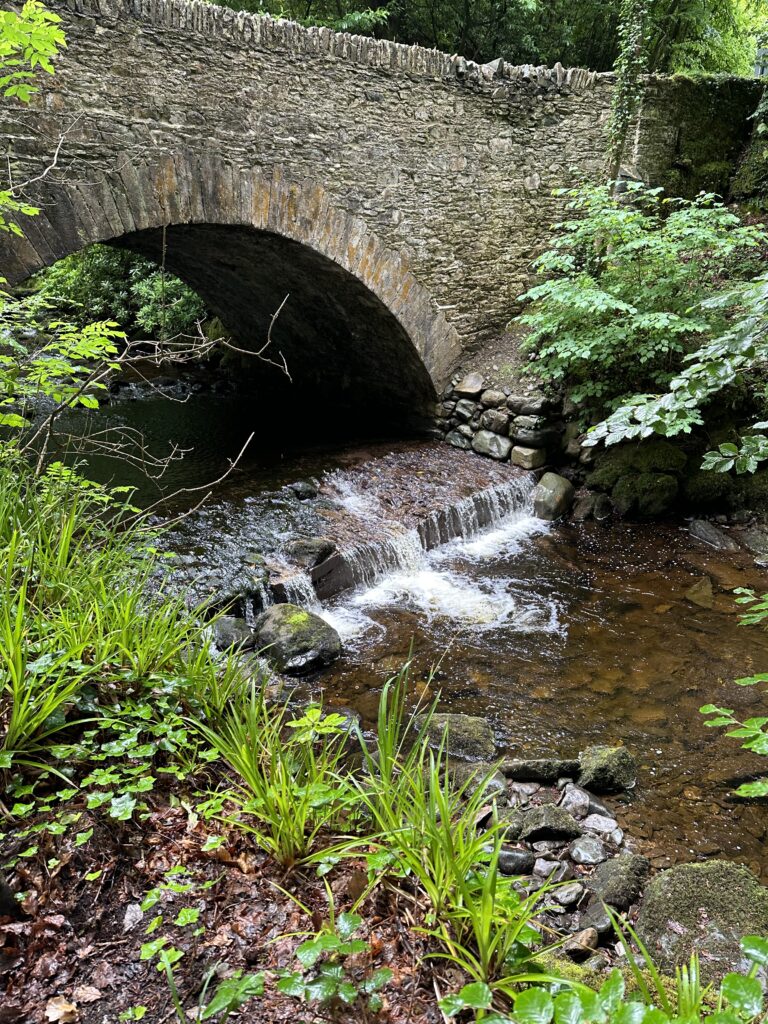
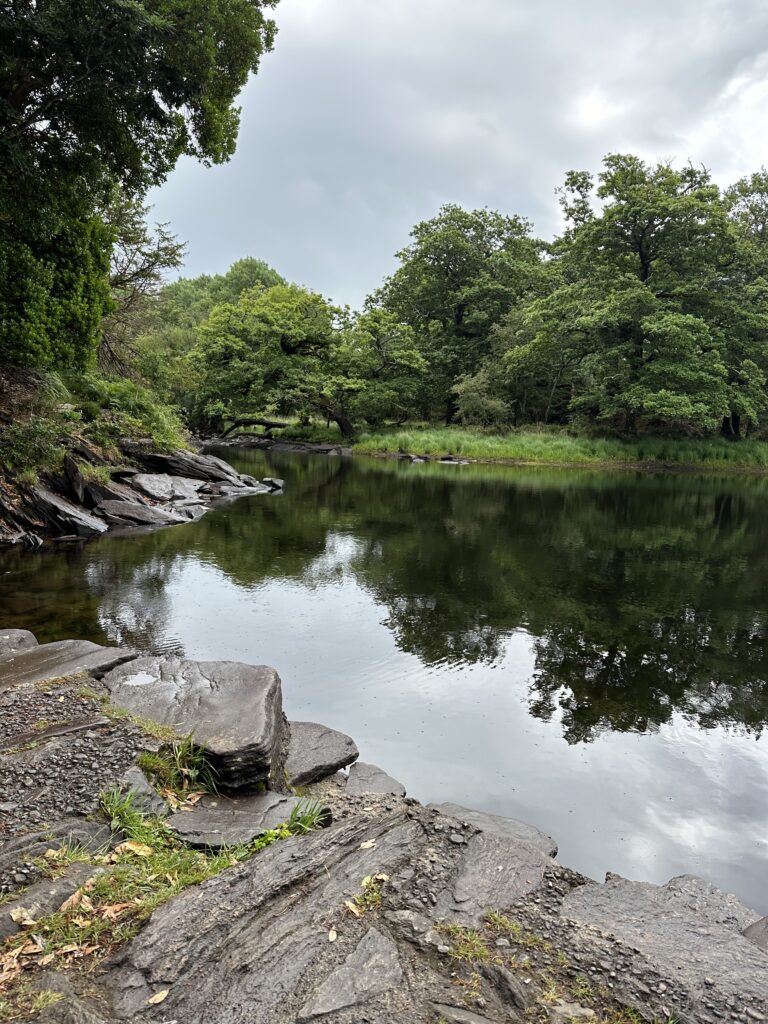
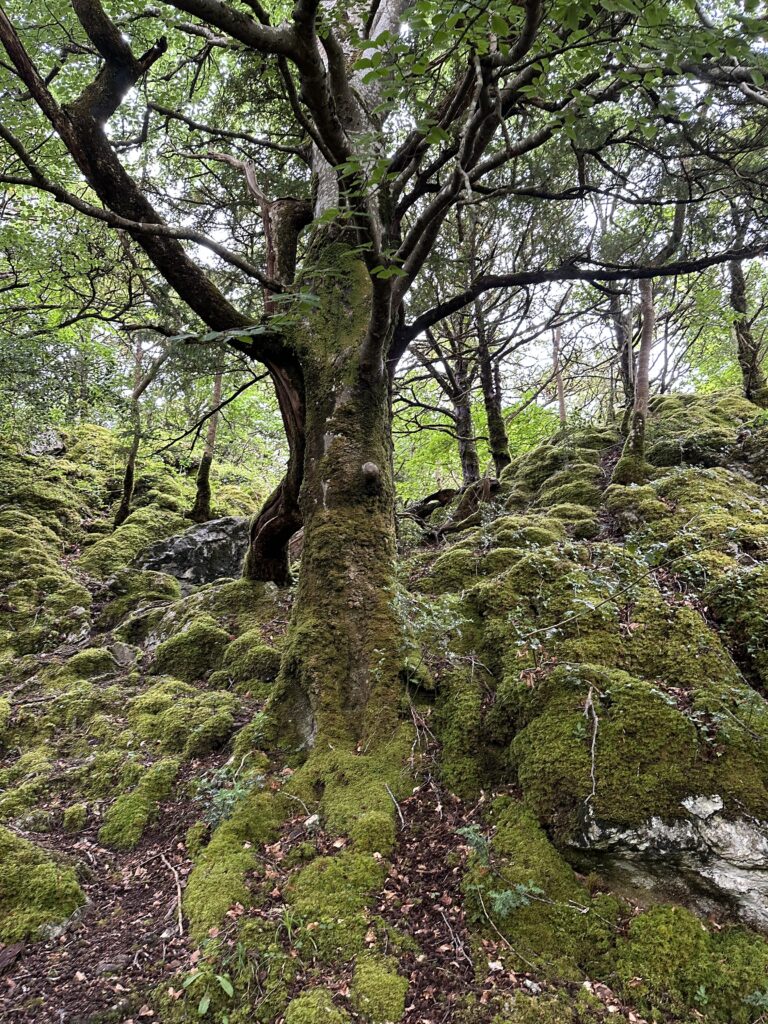
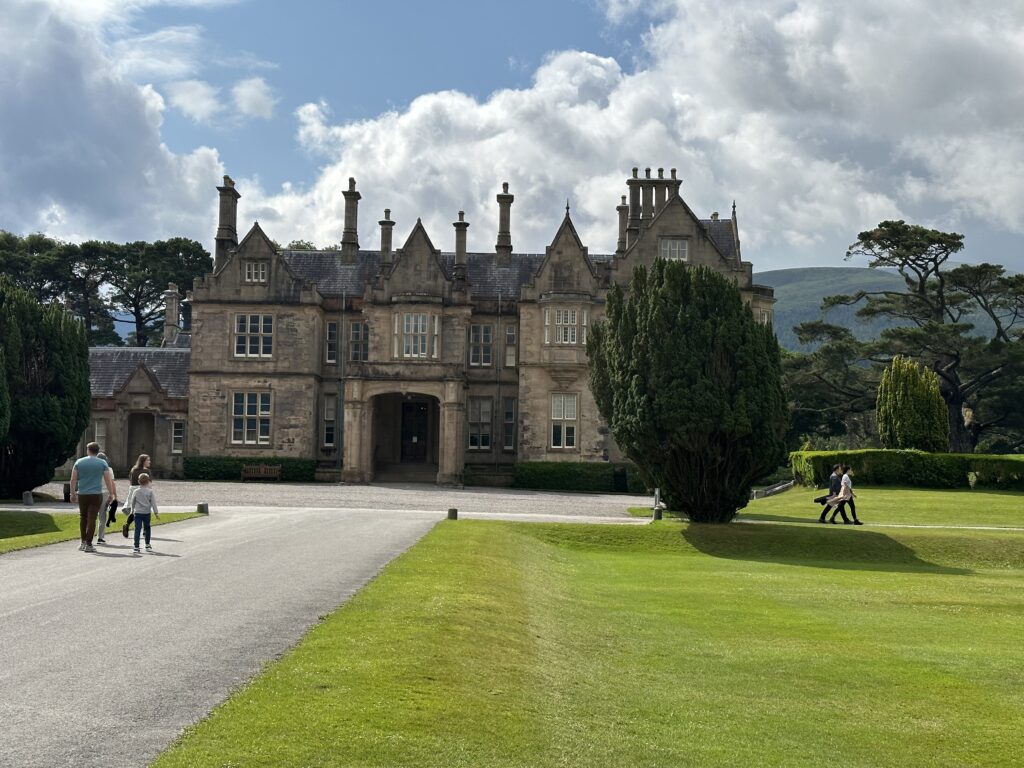
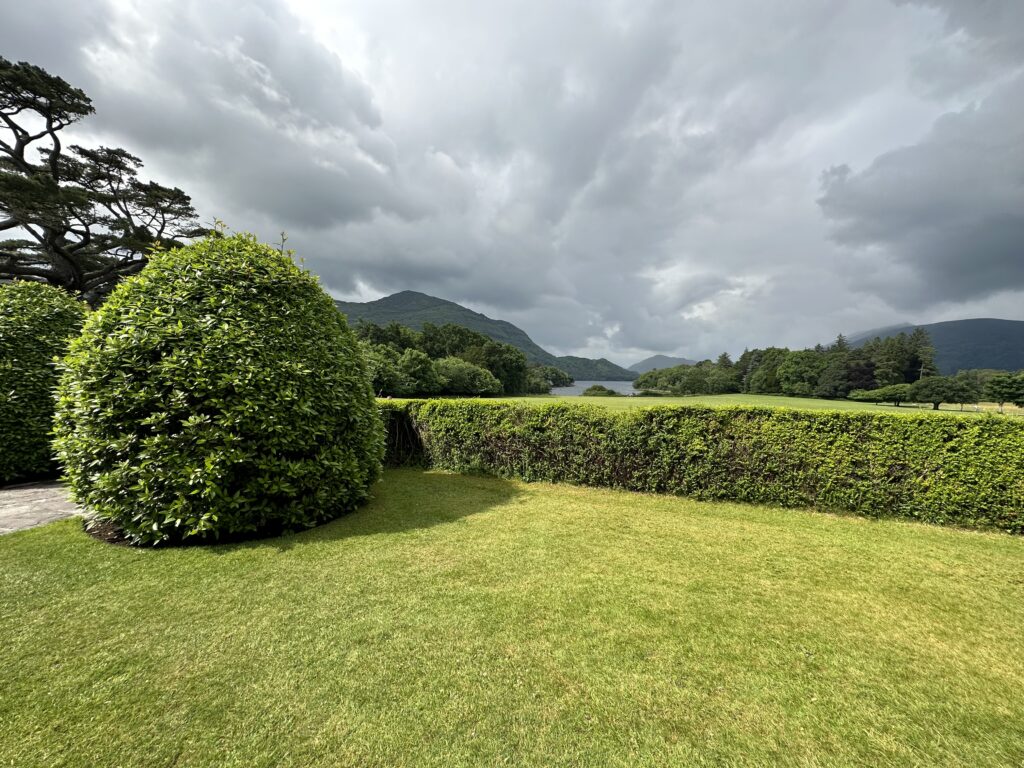
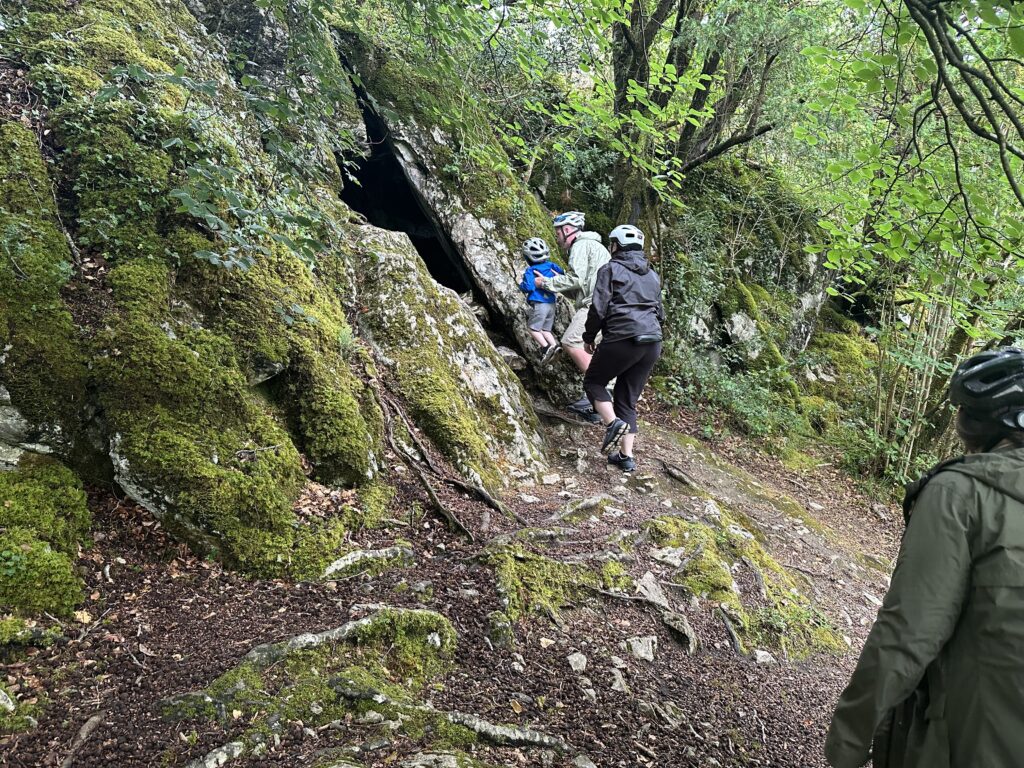
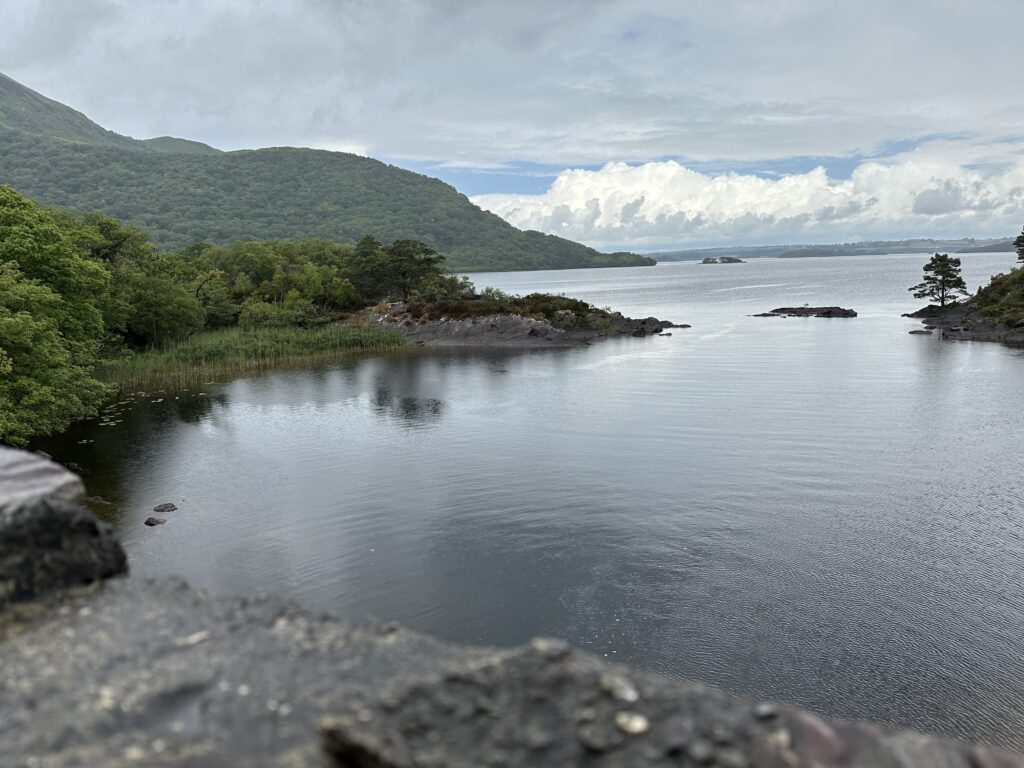
After a quick but tasty lunch at the park, we were on the road to Portmagee. Our guides stopped at the incredible remains of the Cahergal Stone Ring Fort. This is a wonderful, off-the-beaten-path site we would have never seen on our own. Built around 600 AD, this fort has walls up to 10′ thick and 20′ high. The walls have steps to climb to various levels for different lookout points. Historically, such ring forts would have wooden homesteads inside them. The fact that this one is stone indicates the inhabitant was someone of high status.
We spent an hour or more climbing up the walls and walking around in awe.
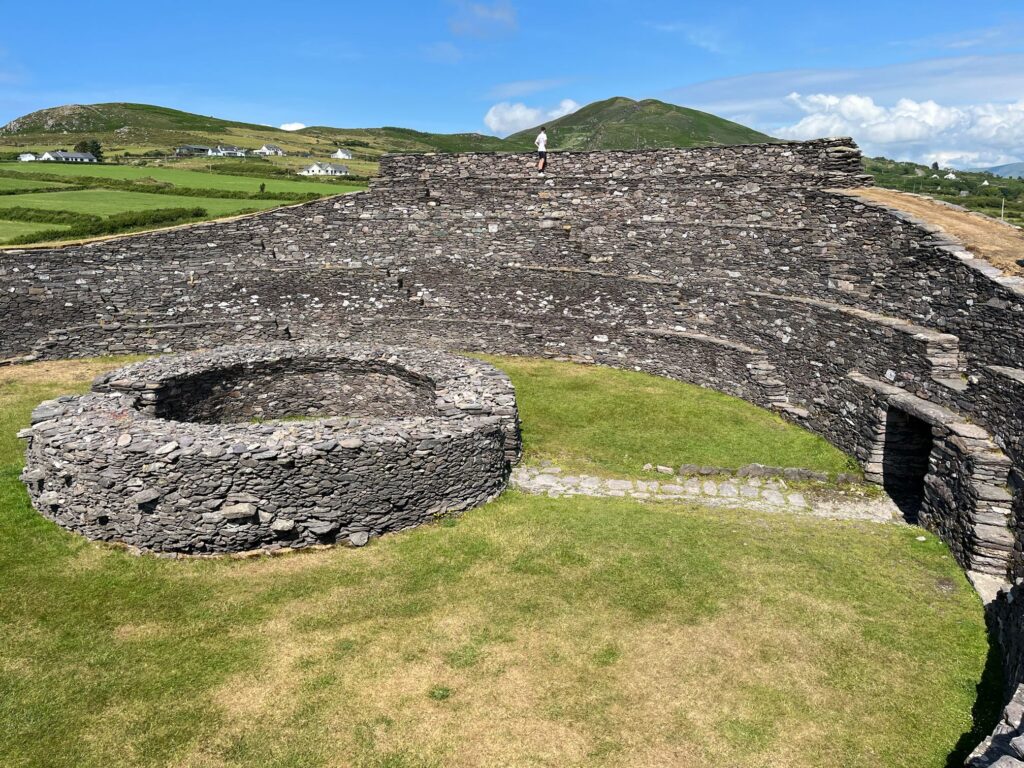
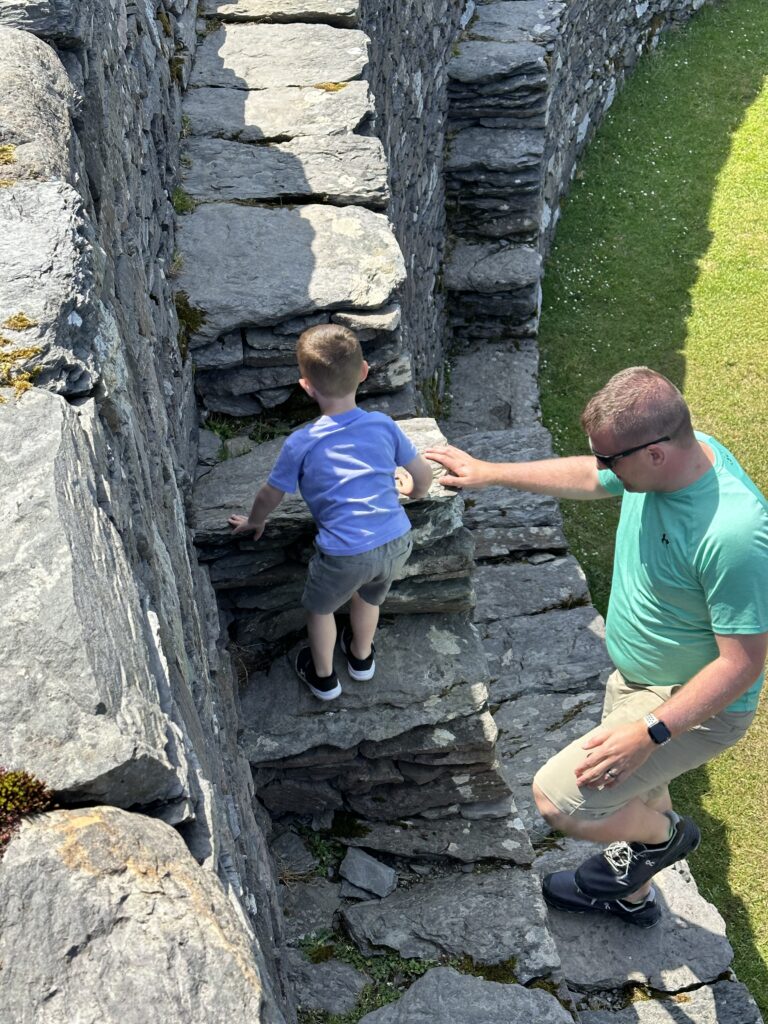

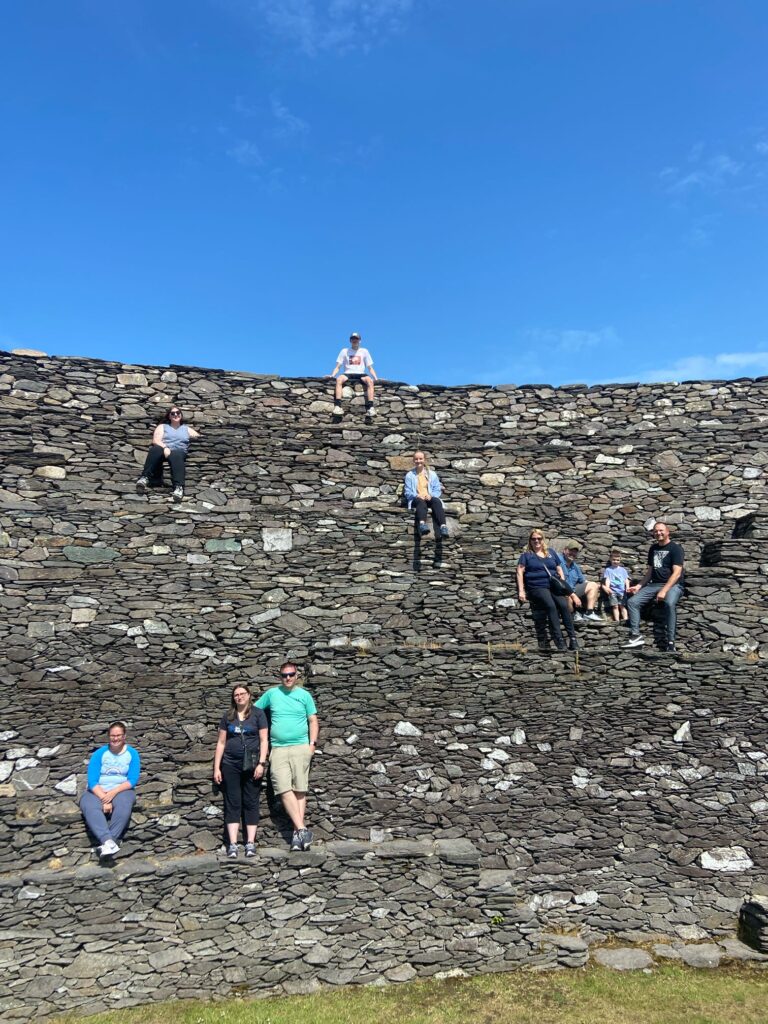
We finished our day in the tiny, picturesque fishing village of Portmagee, population 116. We stayed in the only hotel, The Moorings, and ate at the attached restaurant, the only one in town. The hotel is not fancy, but it is quite comfortable and some rooms have a sea view. It is across the street from the pier, and right in the center of town.
The people we encountered were extraordinarily kind and welcoming, and the seafood was fresh and delicious.
After dinner, we sat at tables set up at the pier, with cocktails for the adults, and watched the sun go down over the Atlantic.
It was an unexpected delight, and one of the most fun and memorable evenings of our trip.
Day 5 – Skellig Michael & Bray Head Hike
Portmagee’s claim to fame, and the reason for our visit, is the Skellig Islands: Skellig Michael and Little Skellig. The mysterious, dramatic islands are about 8 miles west of Portmagee by sea. If one wants to get a close-up view, one comes to Portmagee.
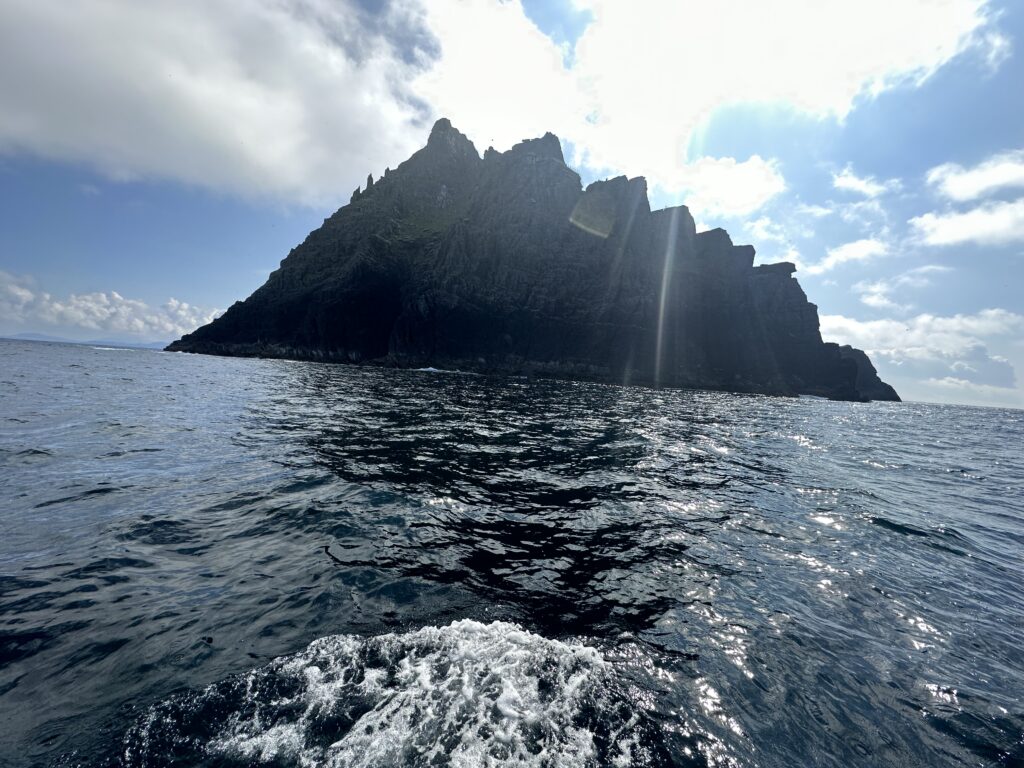
Imposing Skellig Michael, a UNESCO World Heritage Site, rises 750 feet above sea level. From the 6th to the 13th century, it was home to a Christian monastery perched on a ledge near the top. This island is so unique and extraordinary that it was used in the filming of two Star Wars movies, The Force Awakens and The Last Jedi. During that time, Mark Hamill and JJ Abrams, among others, hung out in little Portmagee!
Parts of the monastery, along with the steep stone staircases to get there, have been preserved and can be explored on foot by determined folks with an adventurous spirit, a lot of energy, and steady sea legs.
Little Skellig is 450 feet above sea level and along with Skellig Michael is home to one of the most diverse seabird populations in Ireland, including adorable puffins.
The waters around the islands are filled with sharks, whales, dolphins, and sea turtles and draw scuba divers to the area.
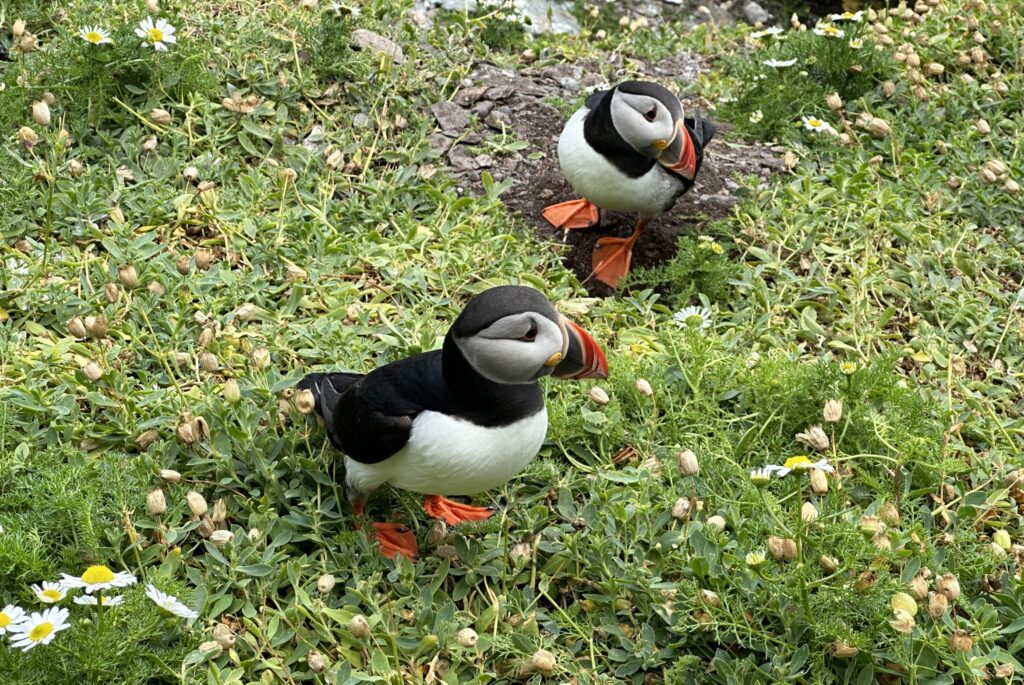
There are three different ways to experience the islands (we did not experience the second one):
- Hiking to Bray Tower, a historic signal tower, for beautiful views of the islands
- Taking a guided boat tour around the islands
- Booking a landing on Skellig Michael and hiking up to the monastery (Very limited availability)
The latter two options require an ocean crossing, so are only available seasonally and are weather-dependent.
Four members of our group chose to land on Skellig Michael (making a reservation 7 months in advance).
It was such an incredible experience, it is worthy of its own full post on our site: An Epic Adventure: Landing on Skellig Michael
The rest of the family hiked to Bray Tower. It was built by the British in 1815 during the Napoleonic Wars to watch for attacks. It was also used during World War II, but has been abandoned since then. Today, a hike of about 45 minutes brings you to the tower and views over the Atlantic, the Skellig Islands, and the cliffs of Dingle in the distance.
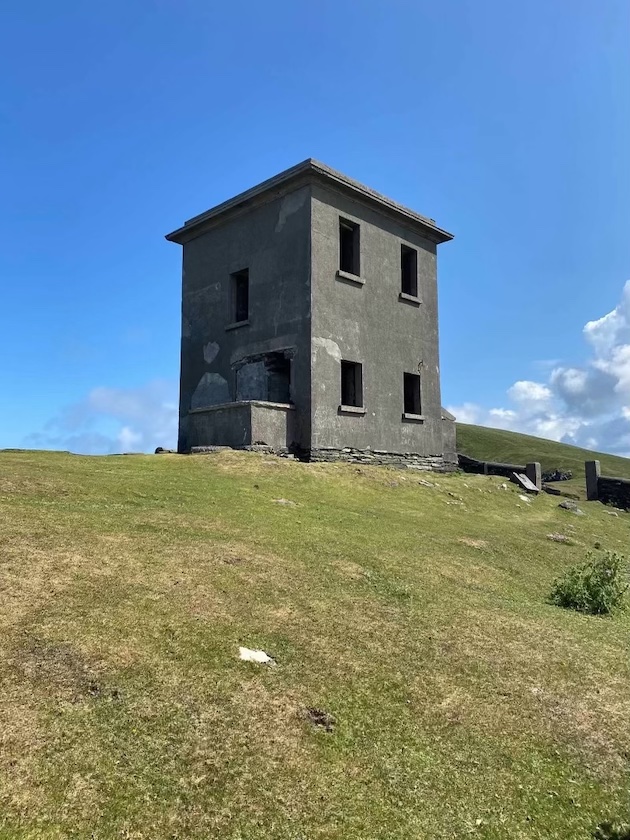
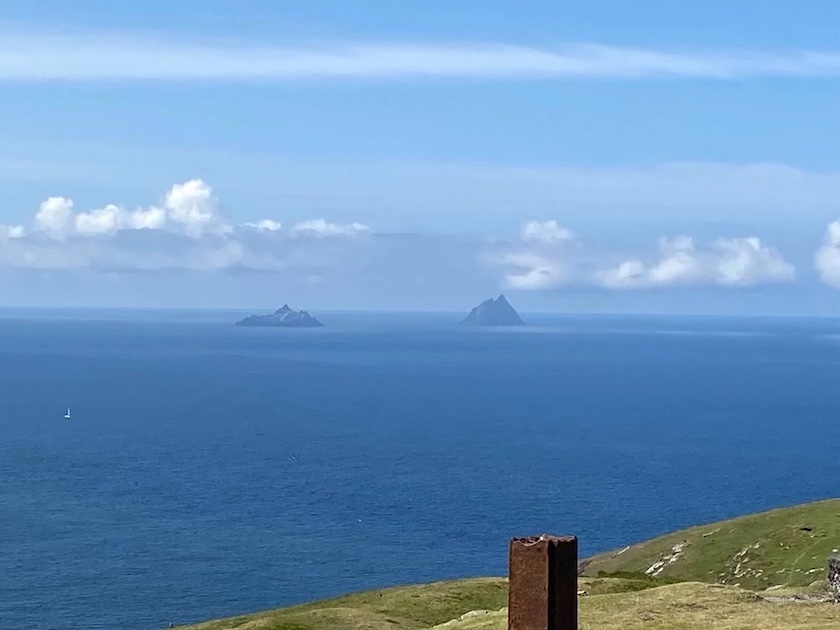
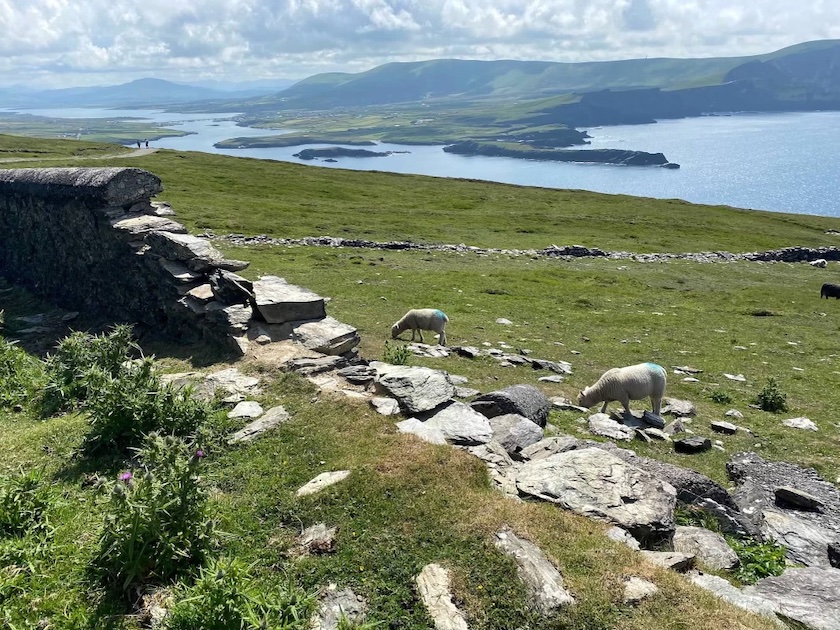
After our morning adventures, we changed gears completely and finally indulged the whisky lovers in our group! When in Ireland…
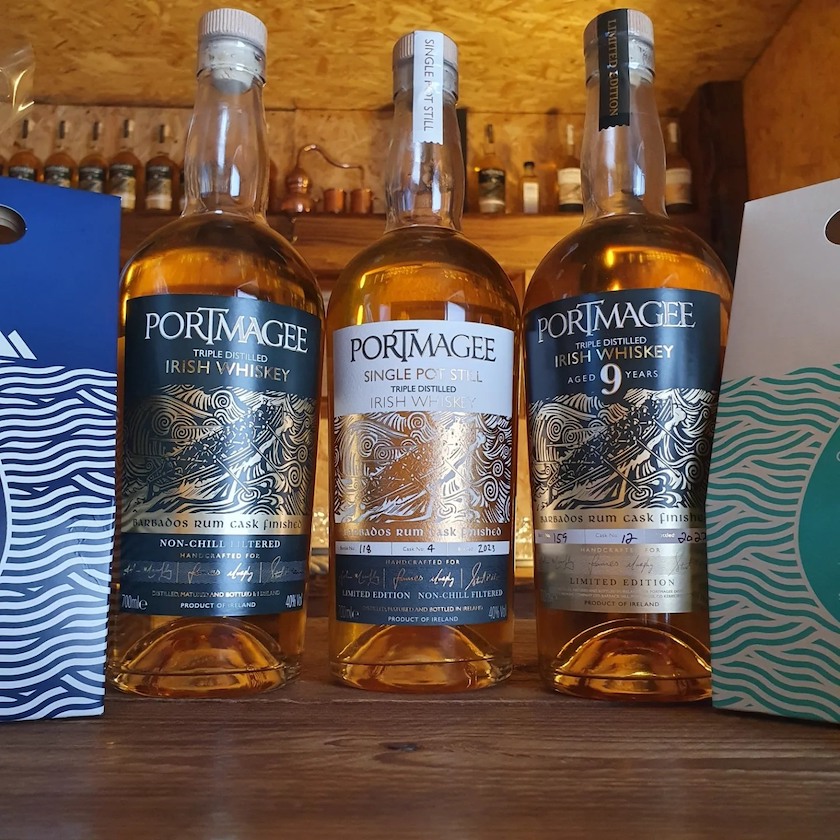
Portmagee Whiskey is more than just a distillery; it also offers extensive historical information about Portmagee and the surrounding area, including an immersive experience in a historic full-sized Seine Boat.
After the fascinating history tour with one of the founders, James Murphy, the adults in our group were treated to a whiskey tasting. James spoke passionately about the three triple-distilled whiskeys they lovingly produce: two blended whiskeys and one single pot still. Even those of us who are not whiskey fans were impressed. Needless to say, we walked away with several bottles of whiskey. (Our favorite was the Portmagee 9.)
We then bid Portmagee goodbye, but it will surely always hold a place in our hearts.
Our lodging for the night was The Coachman’s Townhouse, in lively Kenmare. Because of the whirlwind tour we chose, we had only about 16 hours in Kenmare, (and had to use a little of that time to sleep). The small town has giant views – both mountains and the ocean. The Coachman’s was perfectly located in the center of this colorful town, which is chock full of shops, pubs with live music, and foodie restaurants.
Luckily for us, the Coachman’s was also a prime location for live music, just an elevator ride away! We had a wonderful evening in their pub, clapping and laughing the night away with an energetic Irish band (including a dancing accordion player).
Day 6 – The Beara Peninsula & Gougane Barra
After an early morning walk to a scenic overlook on Kenmare Bay, we set out for the wild and remote Beara Peninsula. Yet again, we were thrilled that our guides took us to this off-the-beaten-path treasure, with such narrow roads that big tour busses couldn’t possibly go there.
One of our favorite stops was a walk to the ruins of the 15th Century Dunboy Castle, which had been controlled by Gaelic Prince O’Sullivan Bere. In 1692, during the Nine Years War, it was burned to the ground by the English in the Siege of Dunboy. The historic remains and views of Bullig Bay make it a fascinating and worthwhile excursion.
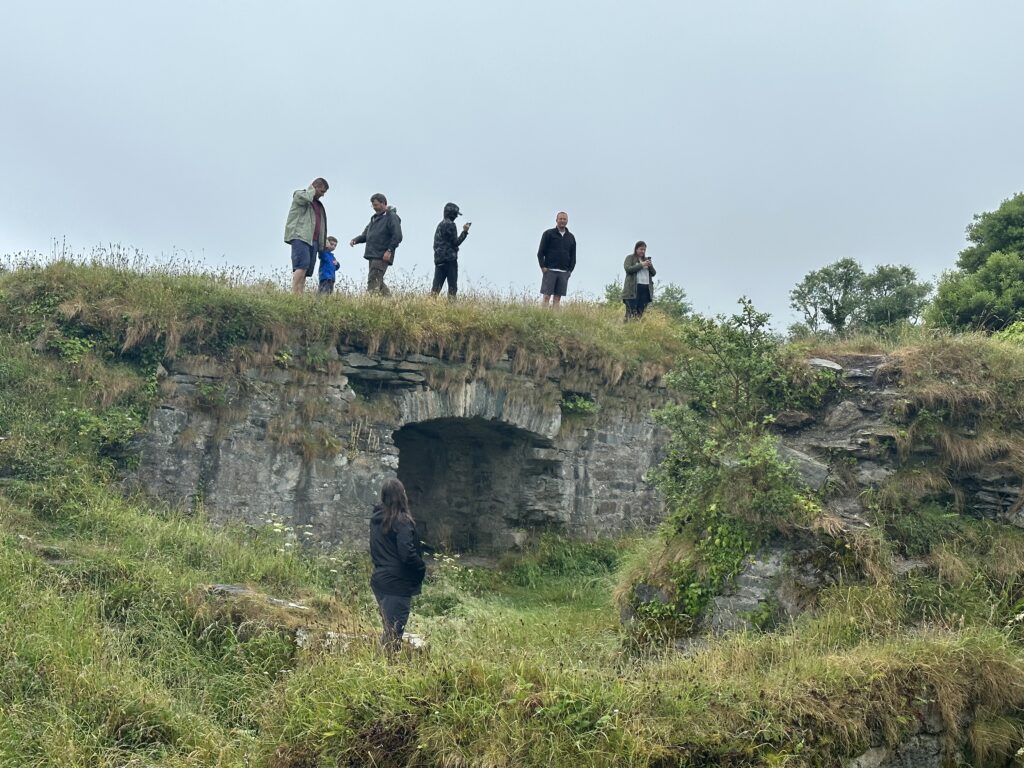
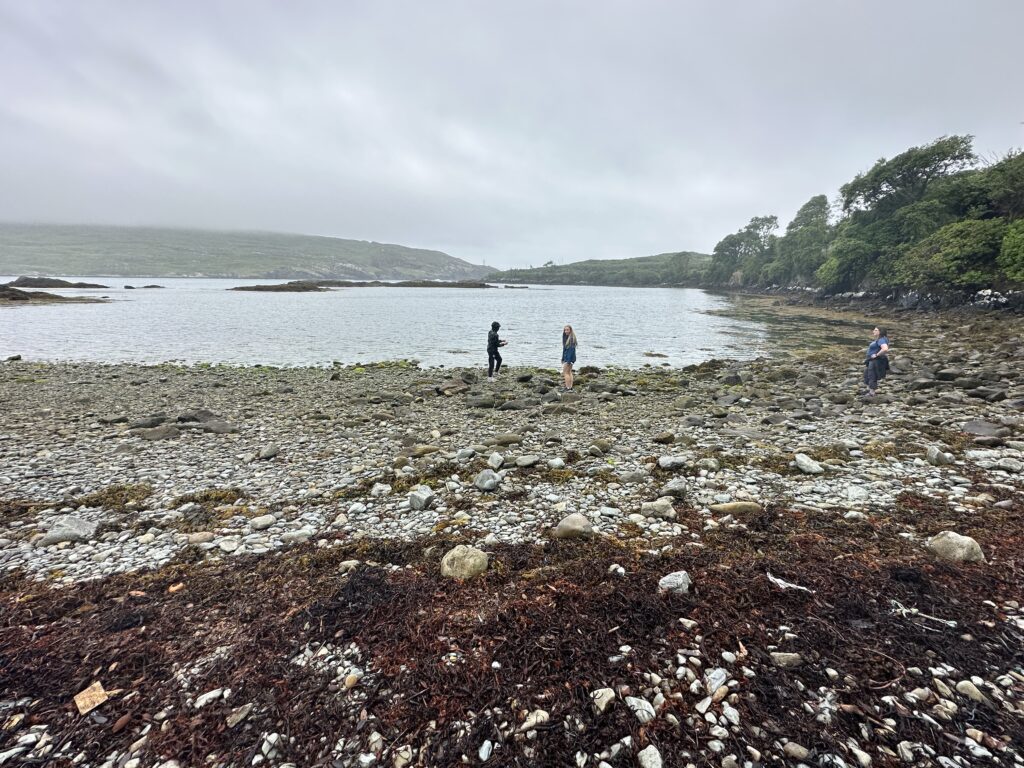
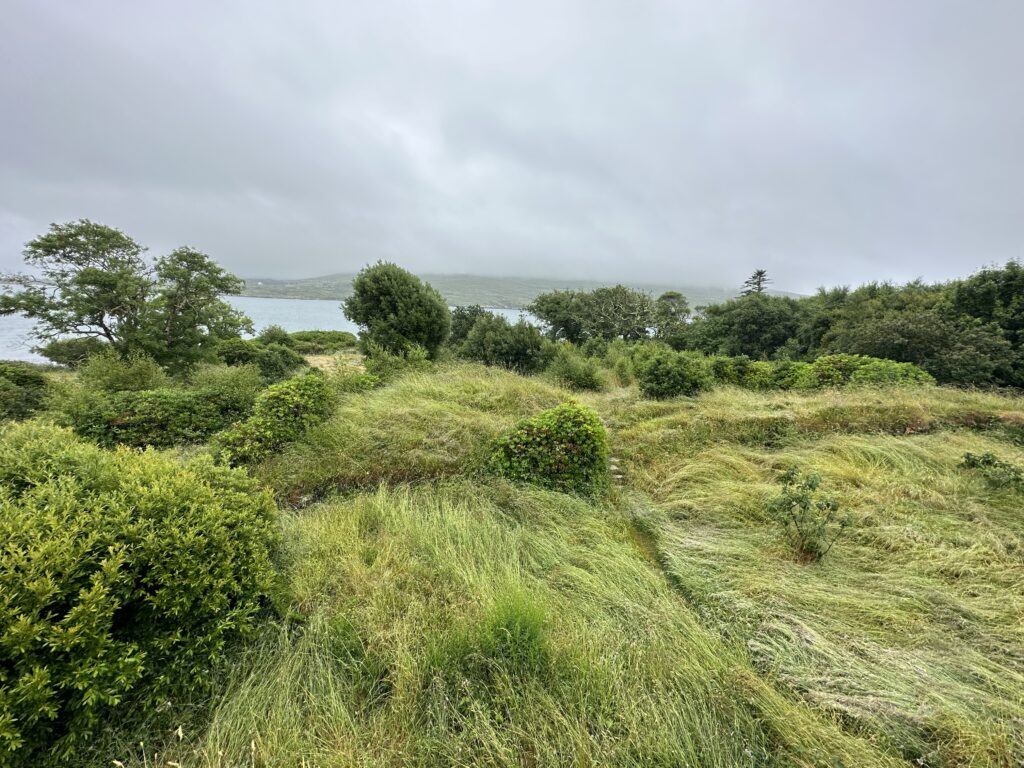
Another favorite adventure on the Beara Peninsula was Garnish Island. We took a short ferry ride, passing Seal Island, where nearly 200 seals live. Several of them were basking on the rock, despite the rainy conditions.
Garnish Island is its own microclimate and has multiple paths through landscaped gardens featuring exotic flowers otherwise not found in Ireland.
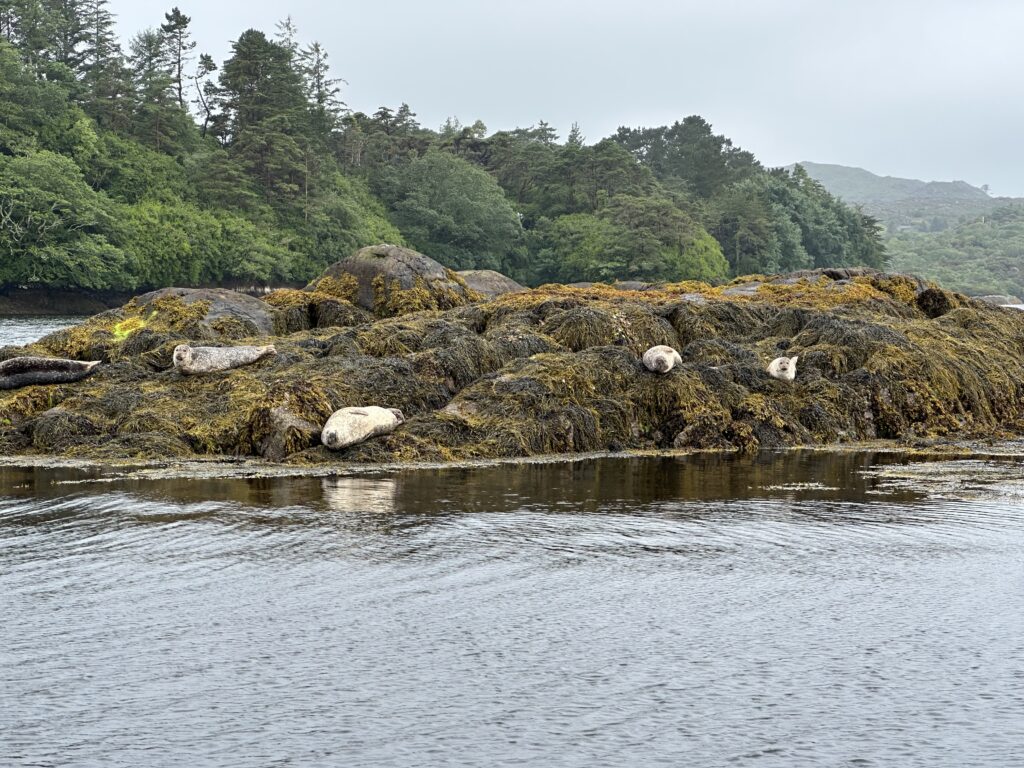
The paths also lead to an old defensive tower, which visitors can climb to the top of, revealing lovely views. From there, visitors can also visit a Grecian Temple, overlooking the mountains and the sea.
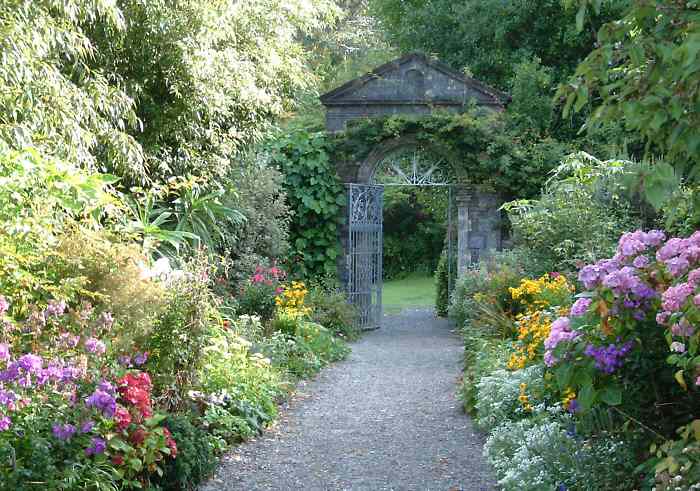
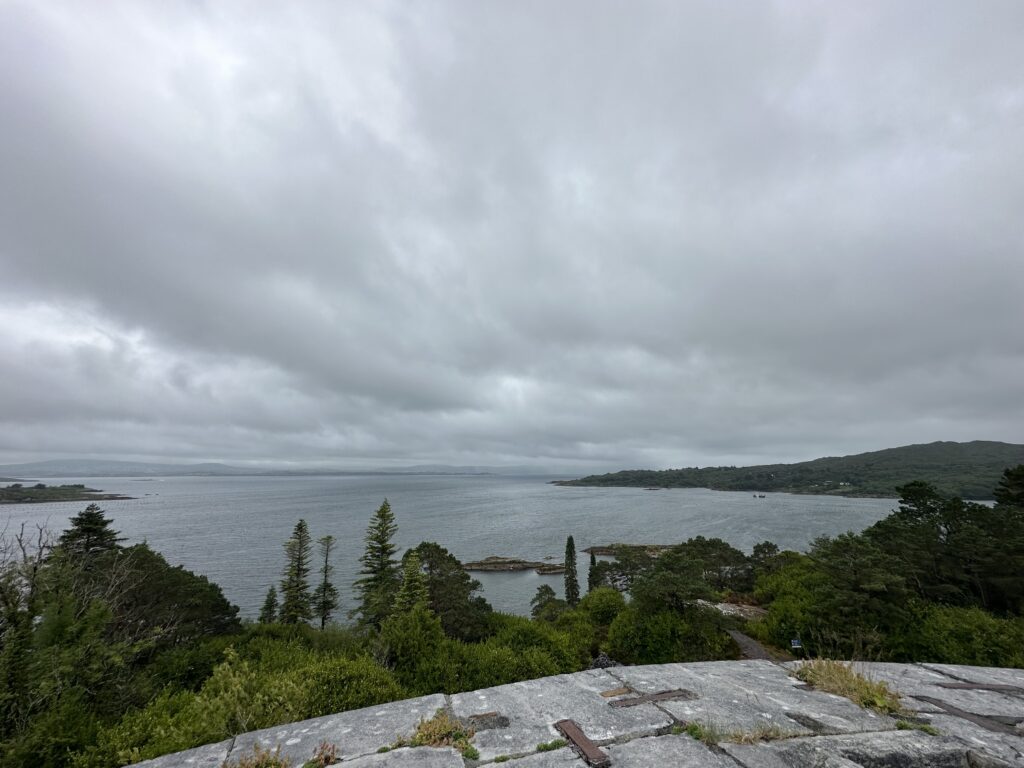
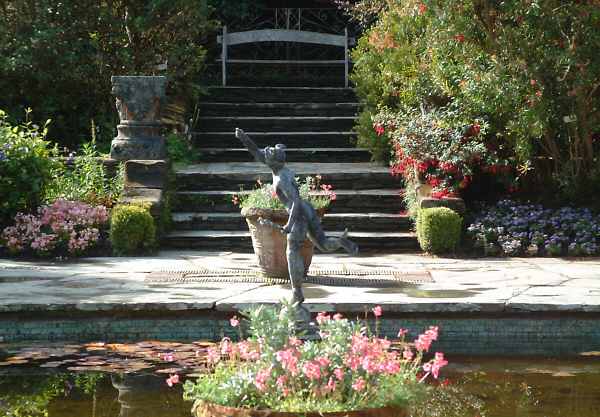
Continuing our exploration of the peninsula, we drove over the Caha Mountains on Healy Pass, called “the bendiest road in Ireland”. It is 8 miles of hairpin turns on a narrow road, with fantastic views of mountains, the sea, ambling herds of sheep, and waterfalls.
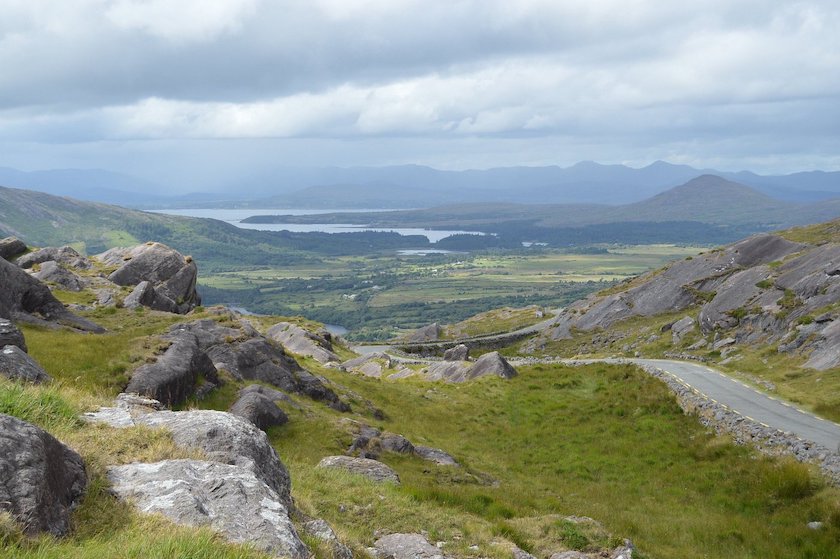

With that, we bid farewell to the Wild Atlantic Way (for this trip, anyway!), but it wasn’t the end of the outstanding scenery. We spent our last night of the tour at the enchanting Gougane Barra Hotel, surely one of the most beautiful hotels and grounds we’ve ever seen. It is a 5th generation family-run hotel that oozes hospitality.
The hotel is a destination in and of itself with a lake, walking paths, a tiny historic church, and an old cemetery. We were grateful to have a couple of hours free to explore the exquisite grounds. It was pouring down rain (not quite lashin’) but that didn’t stop any of us for a moment. It is also next to the Gougane Barra Forest, with multiple hiking trails.
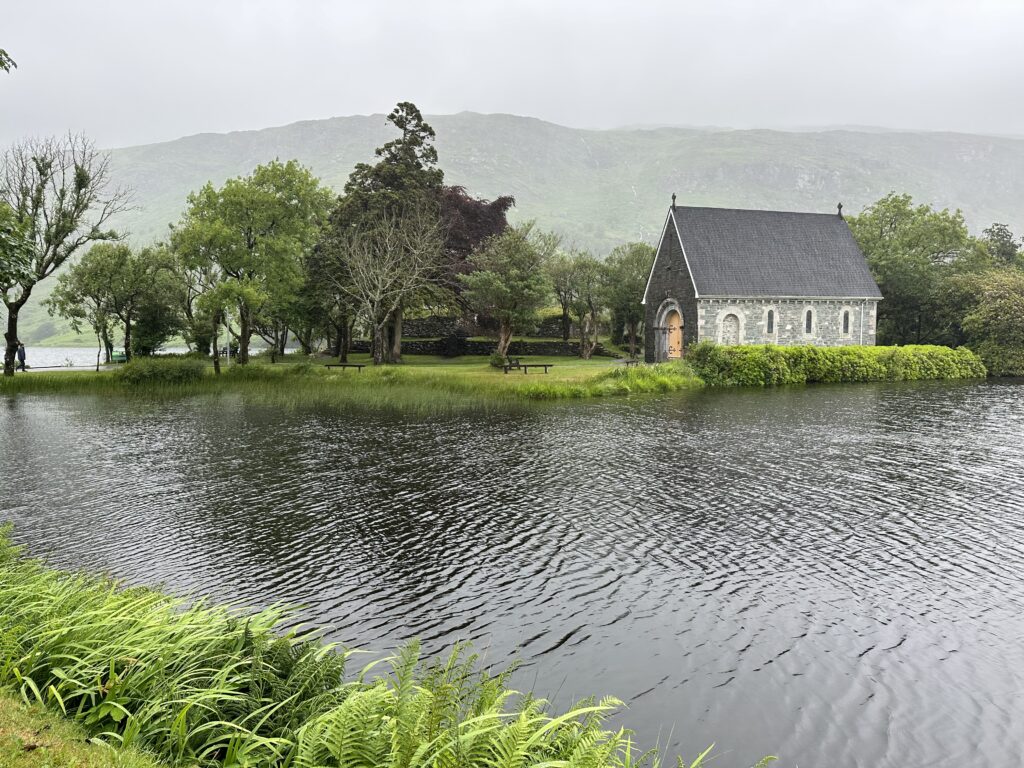
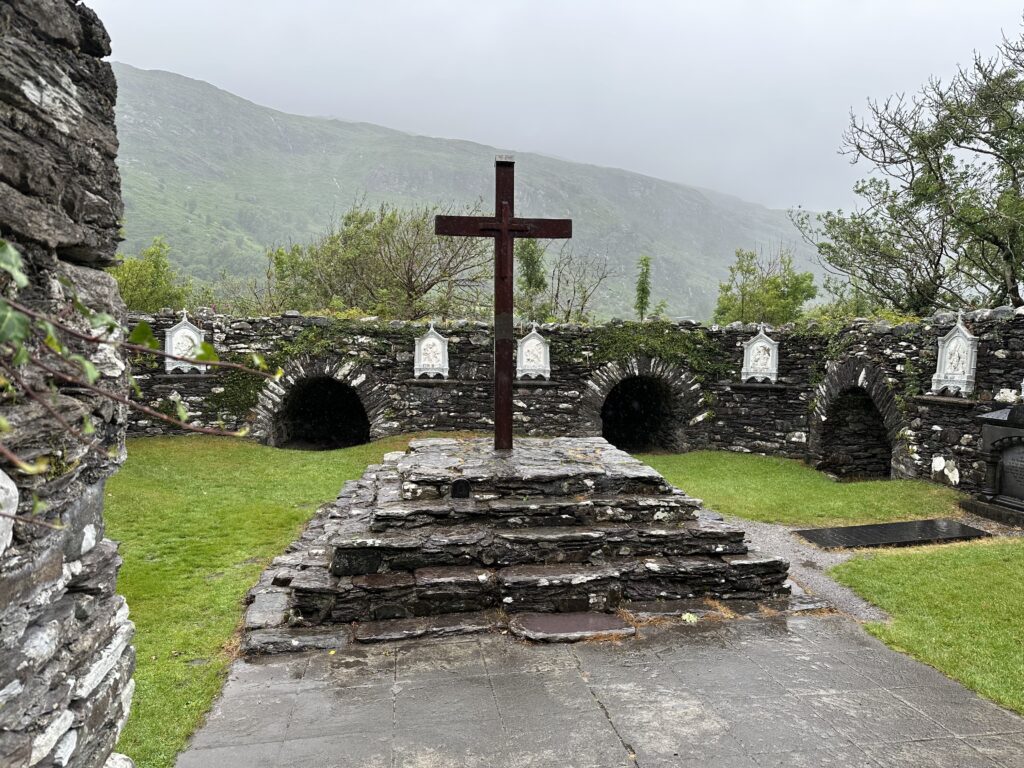
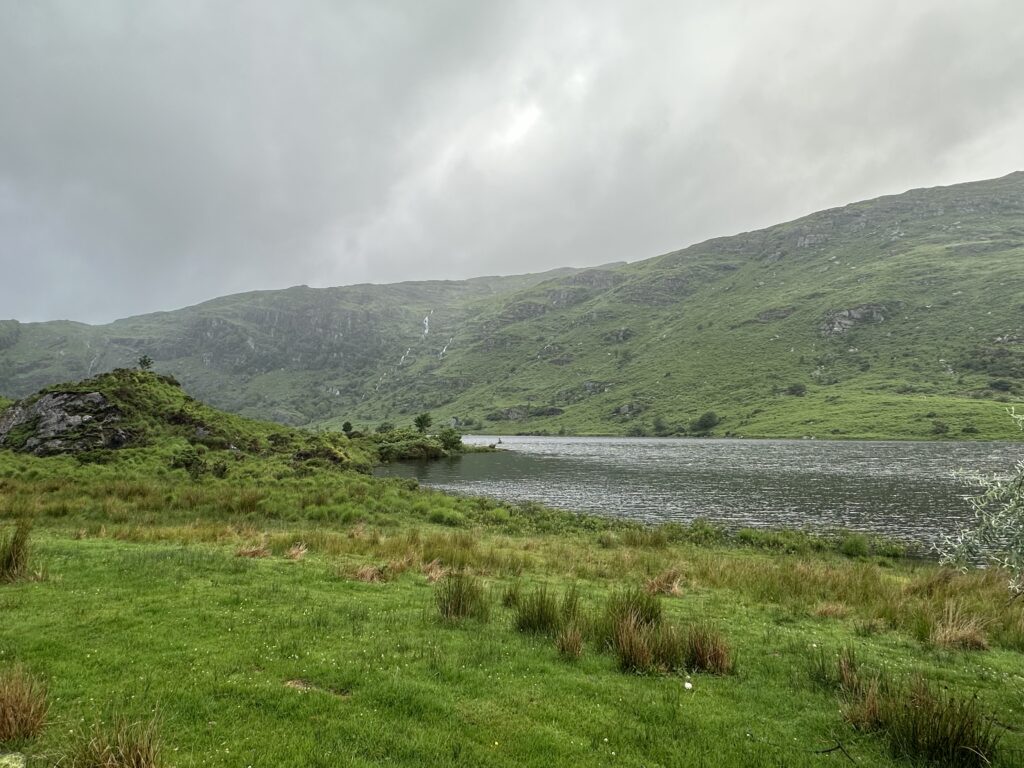
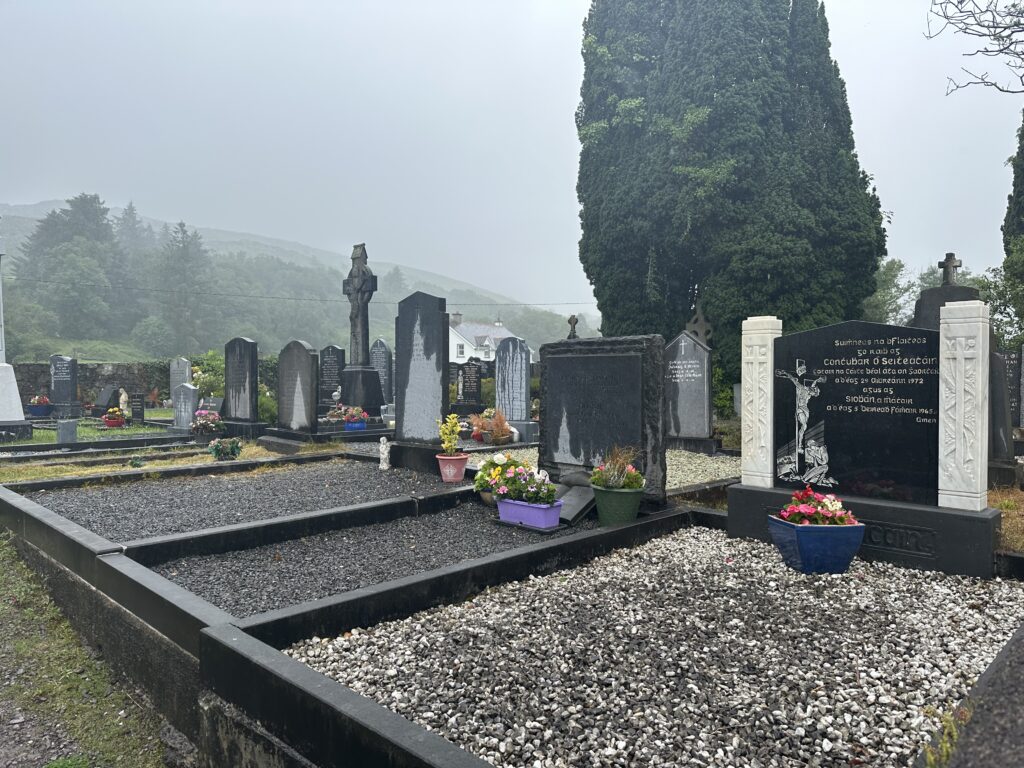
Our tour guides treated us to a private cocktail hour in the hotel’s cozy bar to celebrate our last night with them. It should have been us treating them! Then we all headed to the beautiful dining room overlooking the lake and enjoyed a truly gourmet meal, all locally sourced, including ingredients from the hotel’s private vegetable, fruit, and herb gardens. The food, alone, at this hotel is enough reason to visit.
Day 7 – The Blarney Castle & Rock of Cashel
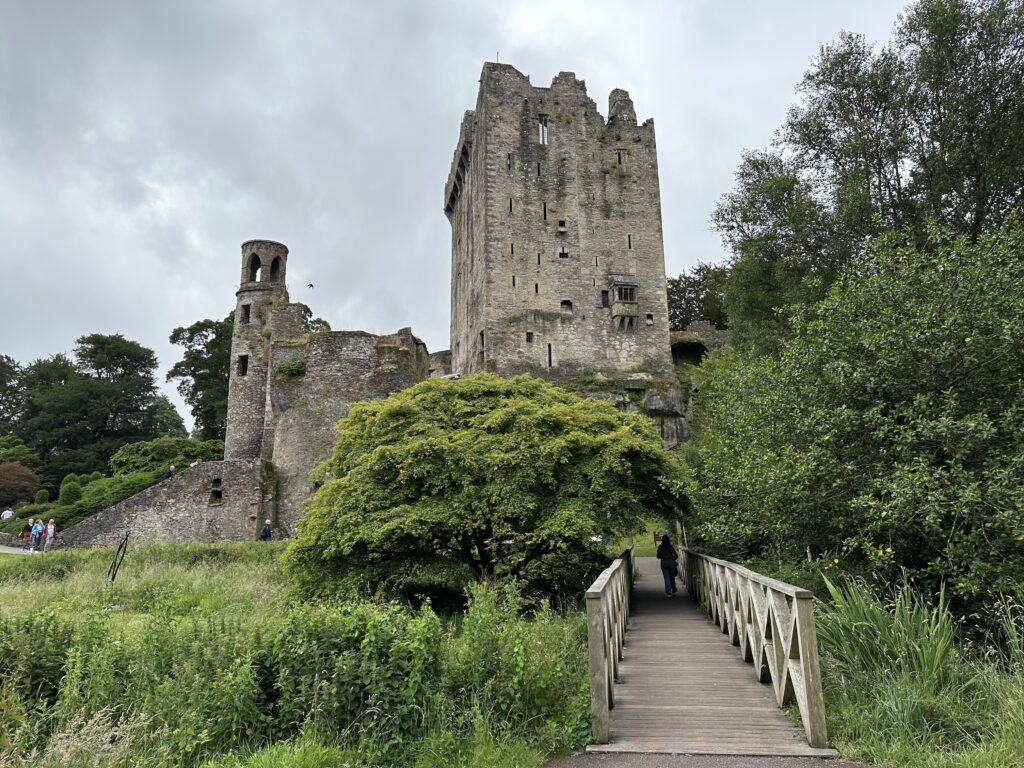
Our last morning of the tour! This was the only day we encountered real crowds. But let’s face it, one ought not go to Ireland and miss the iconic Blarney Castle and Rock of Cashel.
The Blarney Castle & Gardens is an extraordinary place. The enormous medieval castle was built in the 15th century and has 18-foot walls at the base and three underground escape passages. Parts of the castle are ruins now, but some rooms are still accessible.
The 60-acre castle grounds are a wonder. Extensive trails and walkways guide visitors through 11 gardens of different sizes. It would take hours to explore them all. Among the more unusual are the Poison Garden (containing toxic plants – with lots of warnings), the Carnivorous Gardens (containing plants that actually trap and consume insects and even frogs and rats), and the Rock Close (supposedly the site of an ancient Druidic community, it includes a sacrificial altar, a witch’s kitchen, and a witch’s staircase that can grant wishes.)
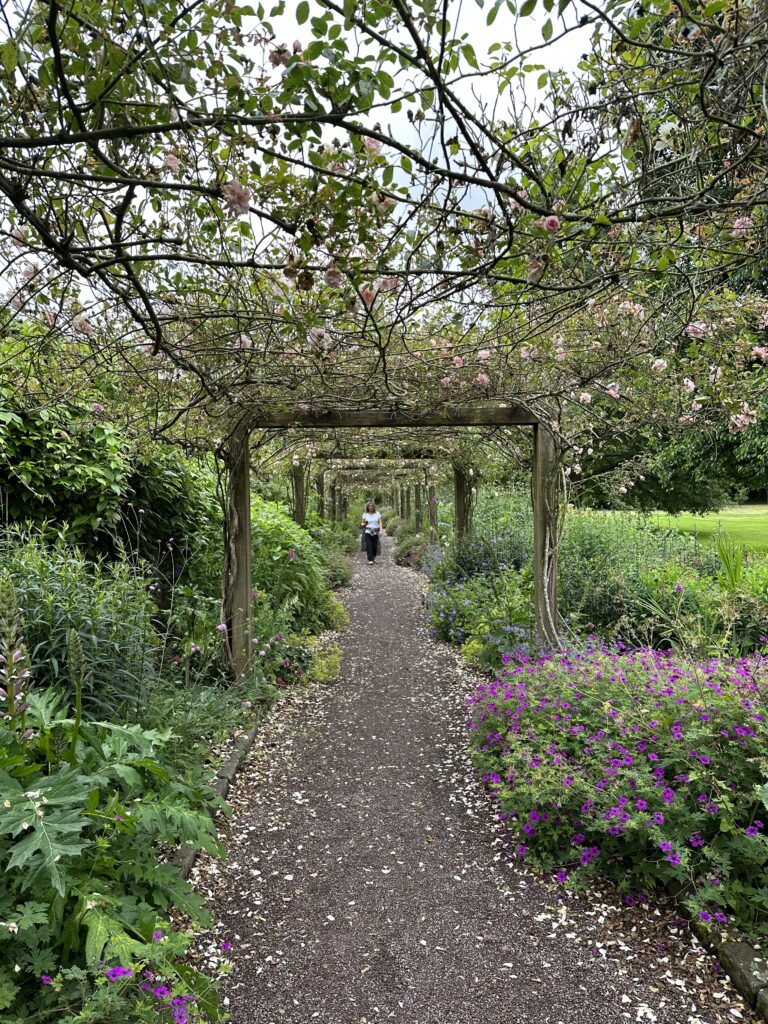
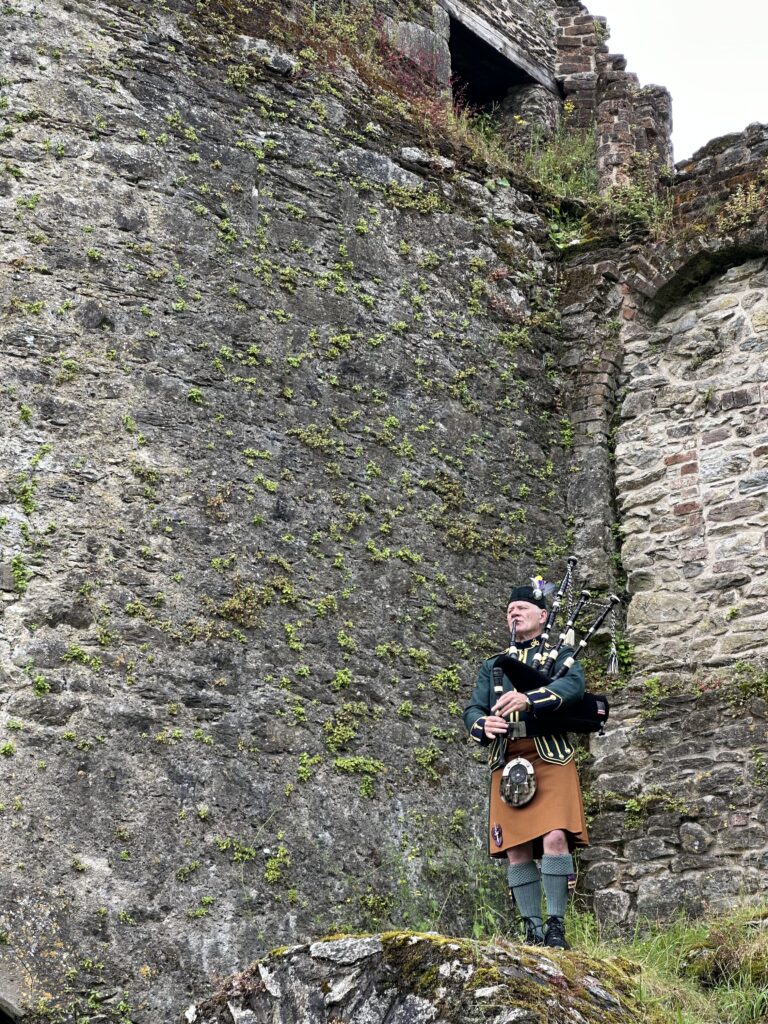
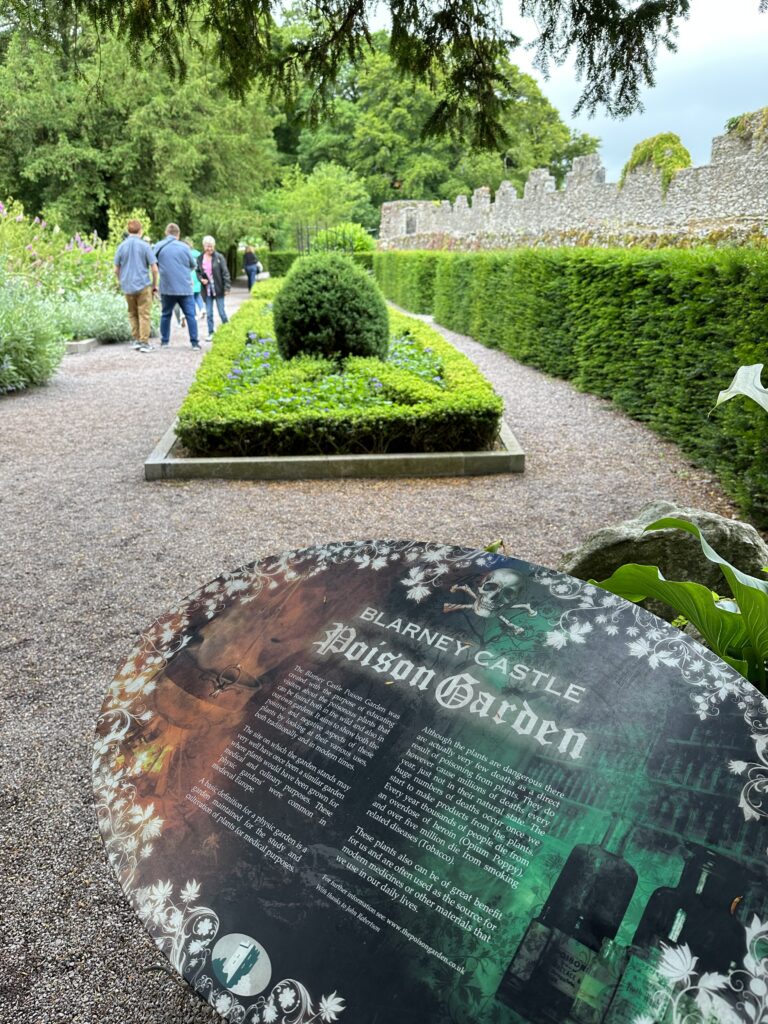
Being a major tourist attraction, the castle grounds also have multiple shops and restaurants. Of note, though, is the Blarney Woolen Mills, which does have a huge collection of Irish wool clothing and blankets, many of which are very high quality, as well as jewelry and gifts. We did not walk out empty-handed!
The Rock of Cashel, also known as St. Patrick’s Rock, is not a rock at all, but the ruins of a monastery built in the 12th century. It is believed to have been built in the 12th century. Legend says the devil took a big bite or rock out of a nearby mountain and then spit it out 20 miles to the south, becoming the Rock of Cashel. It is said to be the site where St. Patrick converted King Aenghus, the king of Munster, to Christianity. It was attacked by the English in 1647, directed by Oliver Cromwell, and more than 1,000 people, including many children, were slaughtered
The haunting ruins are compelling and require at least a couple of hours to explore. Some people say they’re not only haunting but literally haunted. And with that violent history, perhaps it is true. The grounds contain one of the oldest active graveyards in Ireland.
Self-guided walks through the incredible site include a chapel with carefully preserved 12th century art, a gothic cathedral, a soaring round tower, an abbey, and of course the graveyard.
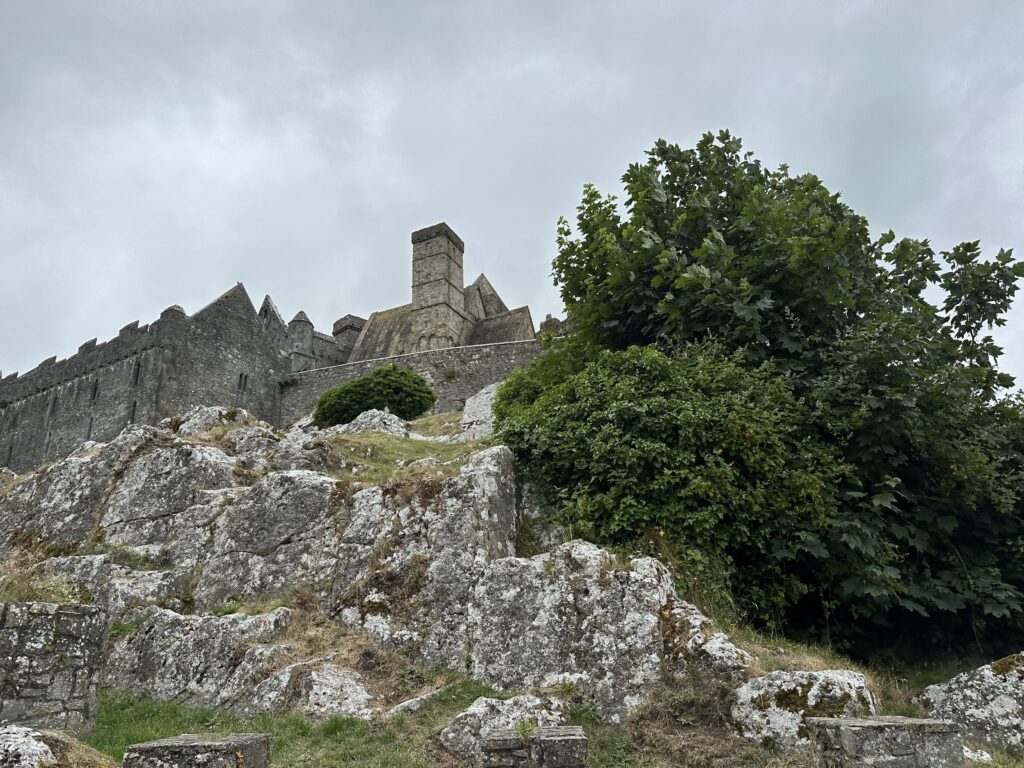
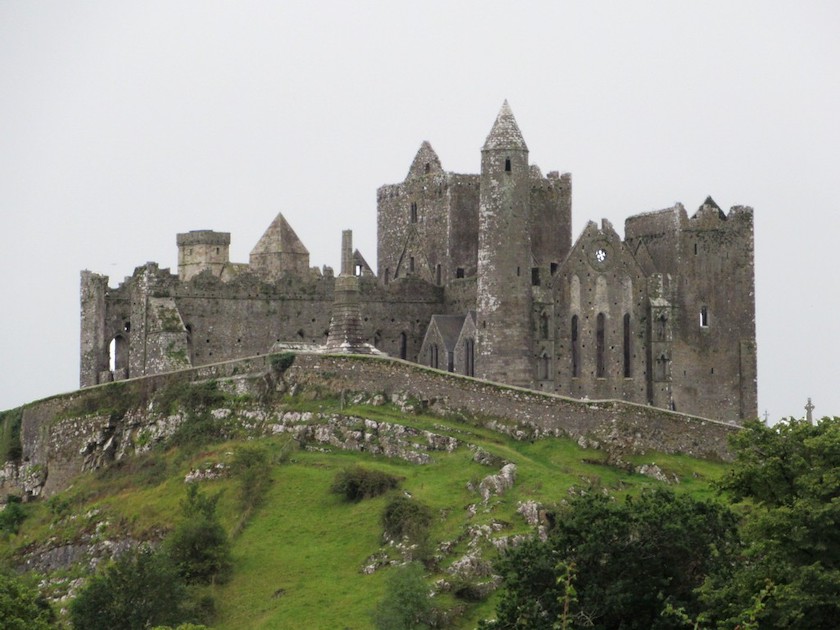
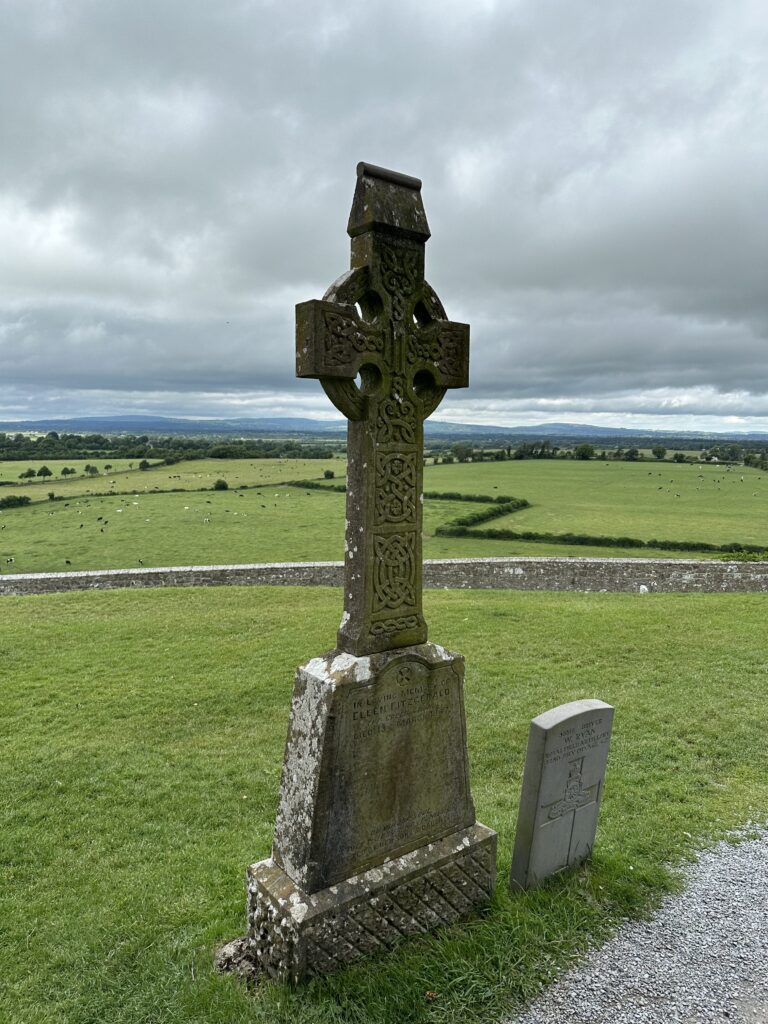
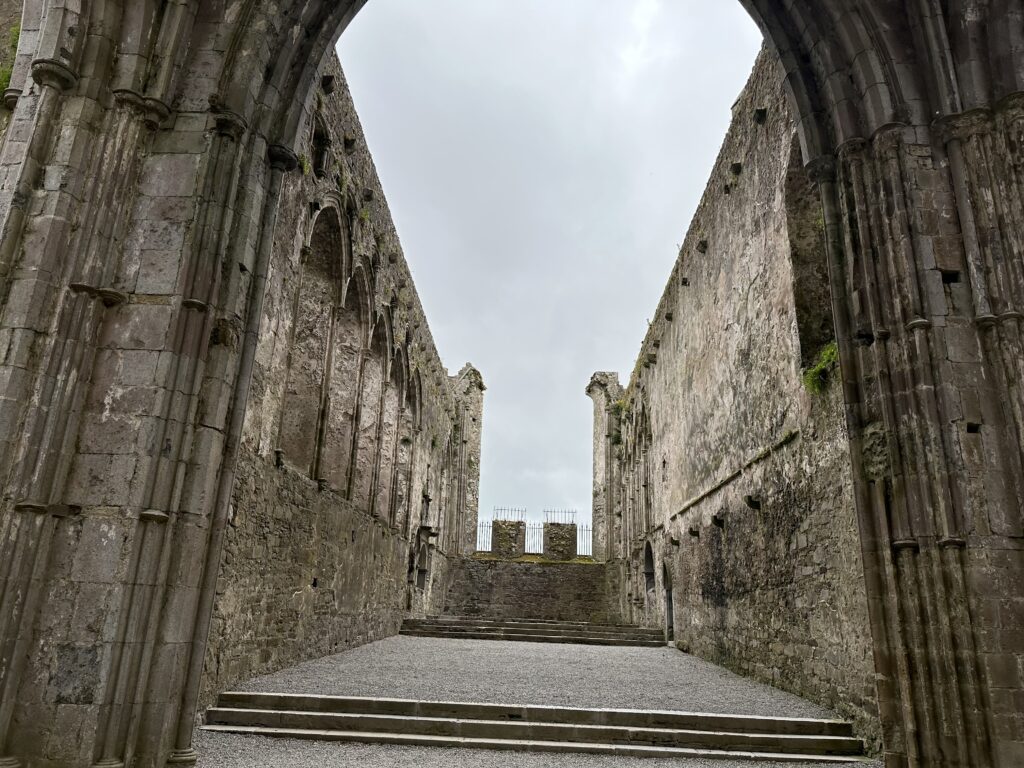
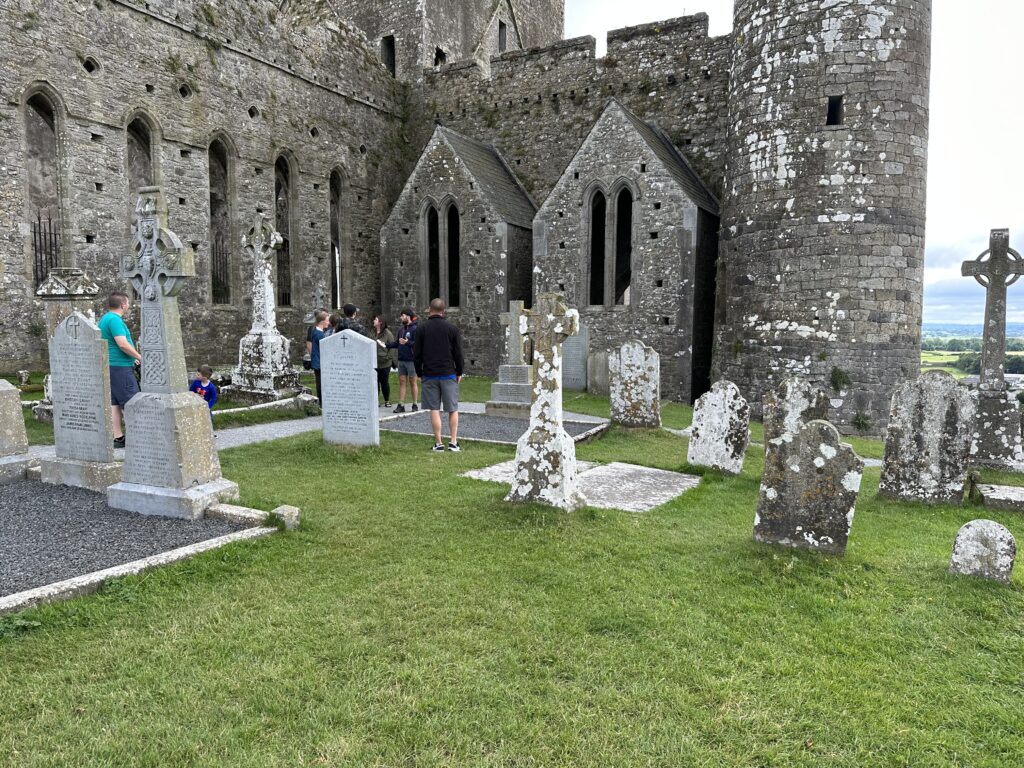
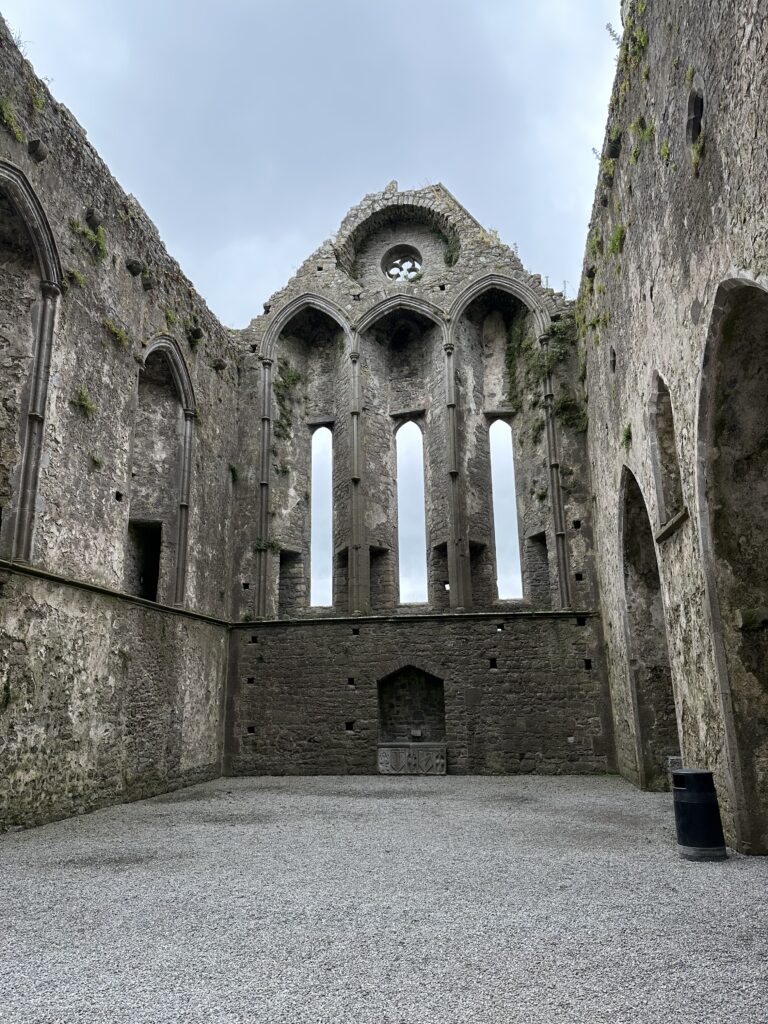
Conclusion
With that, our whirlwind 7-day tour was over, and we were taken back to Dublin for our flights home. We did spend two days in beautiful Dublin (one before the tour and one after) which we’ll cover in a later post.
We have never done a multi-day tour like this before. It’s just not the way we travel. We like complete control of our time and activities. But Ireland is a bit different. It is so spread out, and the train doesn’t go to the remote places which are, of course, the best. The roads are often narrow and confusing, and if you drive, you won’t be able to enjoy the scenery, which is a huge part of the trip.
If you are considering going to Ireland, we highly recommend using a reputable tour company like Vagabond so that you can travel stress-free. (They do offer many slower-paced tours than the one we chose.) Most importantly, save up those vacation days and spend as many of them as you can along the Wild Atlantic Way!
Discover more from Werthwhile Wandering
Subscribe to get the latest posts sent to your email.

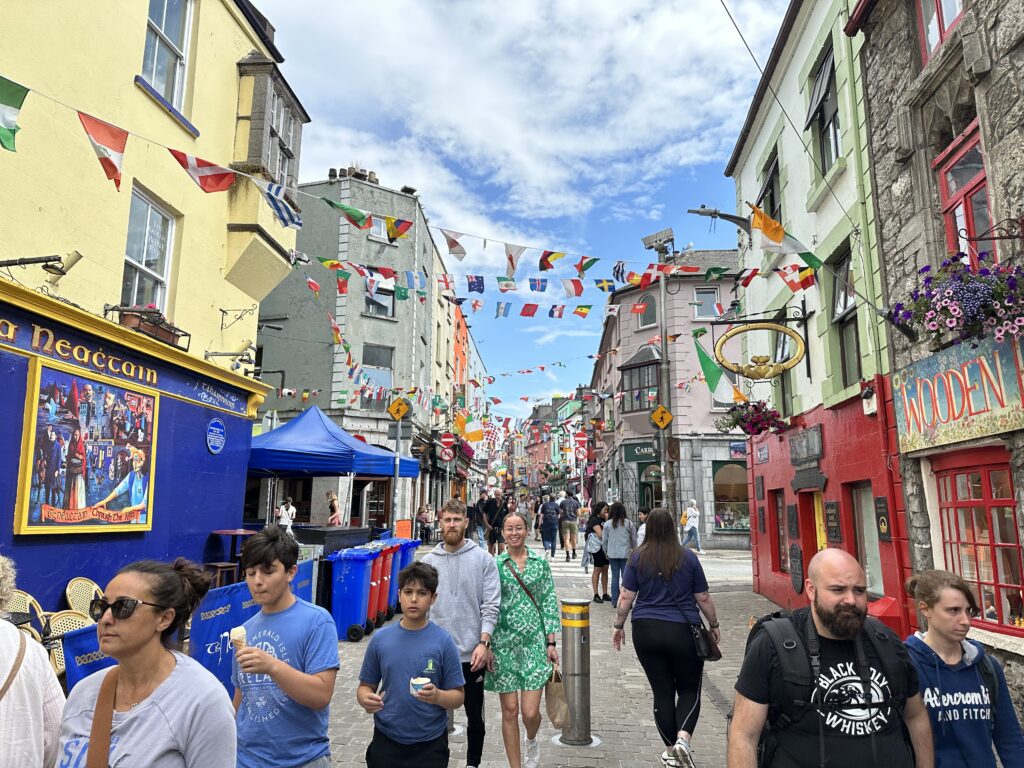
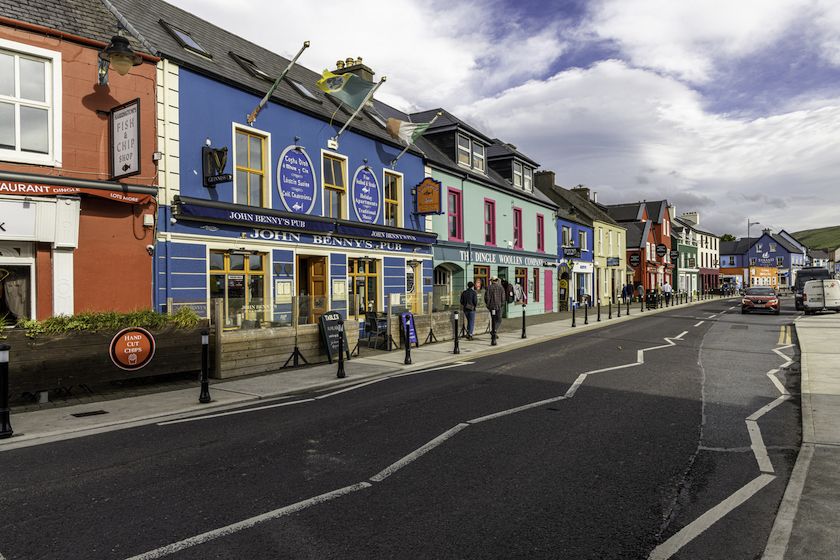
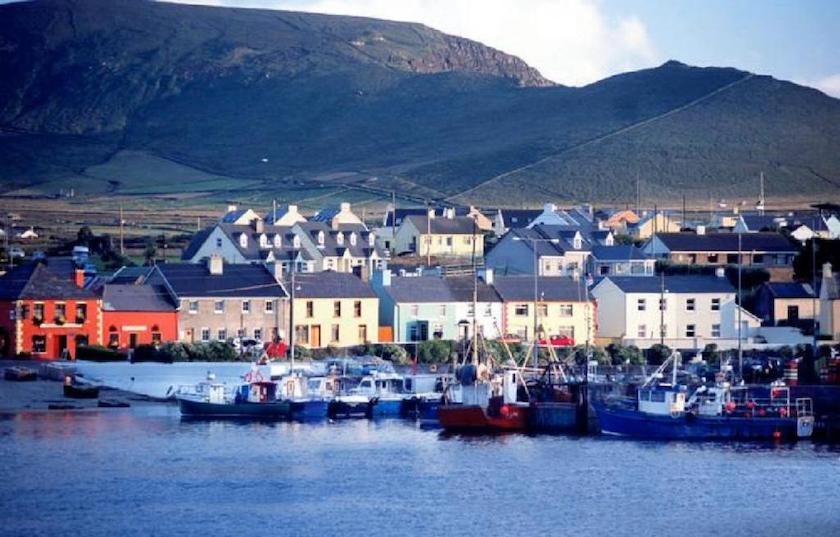
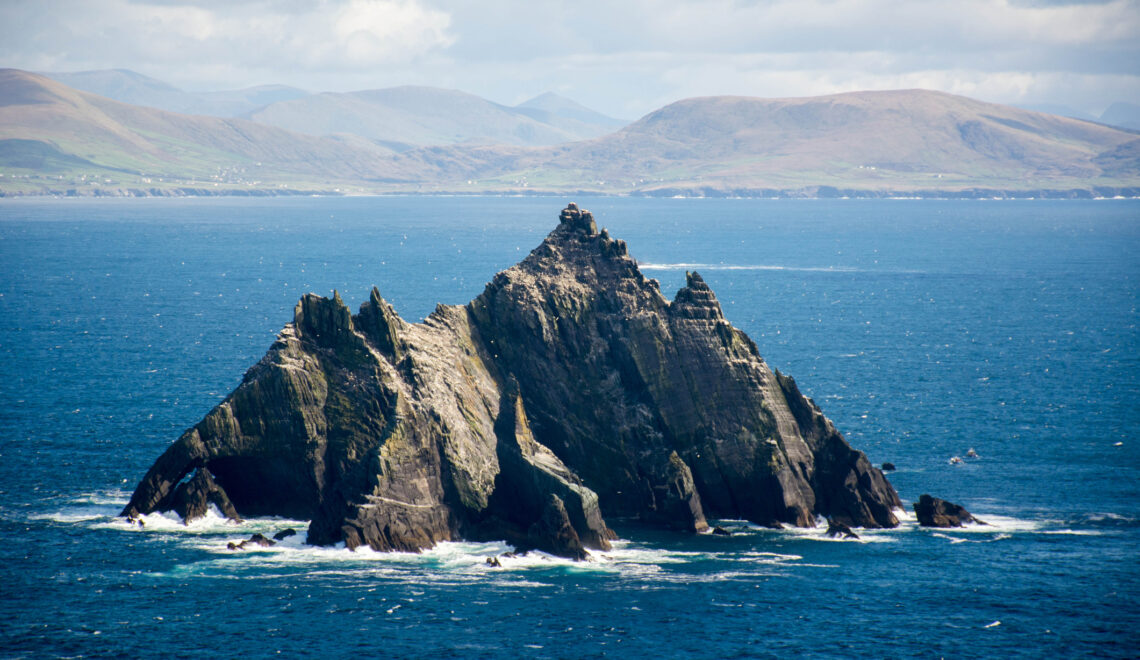




This is a beautiful product overall. We can particularly vouch for the description of the experience in Ireland. We’ve spent about 14 weeks in Ireland over 6 or 7 trips. The description is both beautiful and accurate. This is a great project and we look forward to visiting it from time to time. Will there be a mailing list to notify us when new content is posted? Great job.
Thank you so much, Bill. Ireland is a magical place!